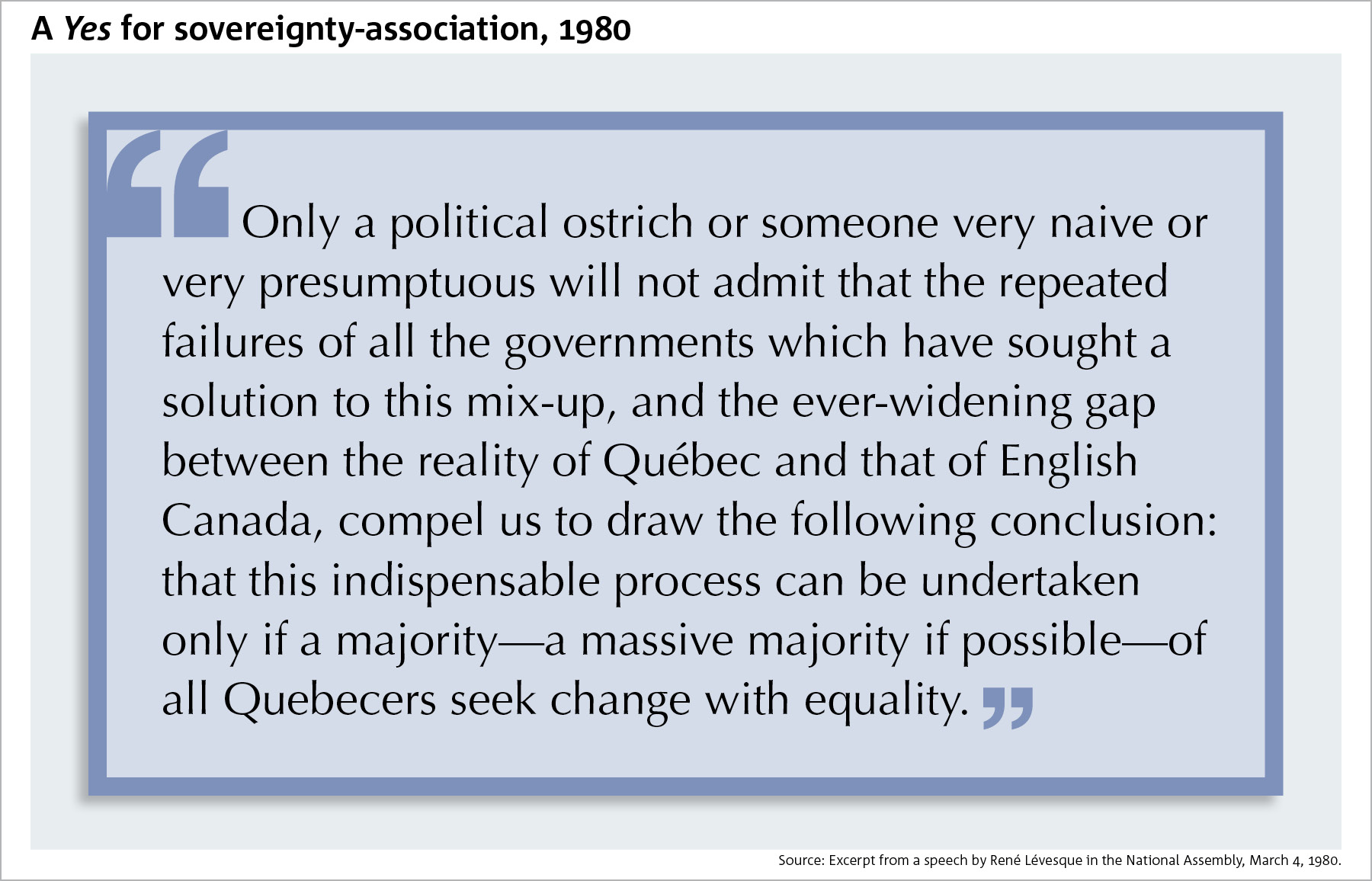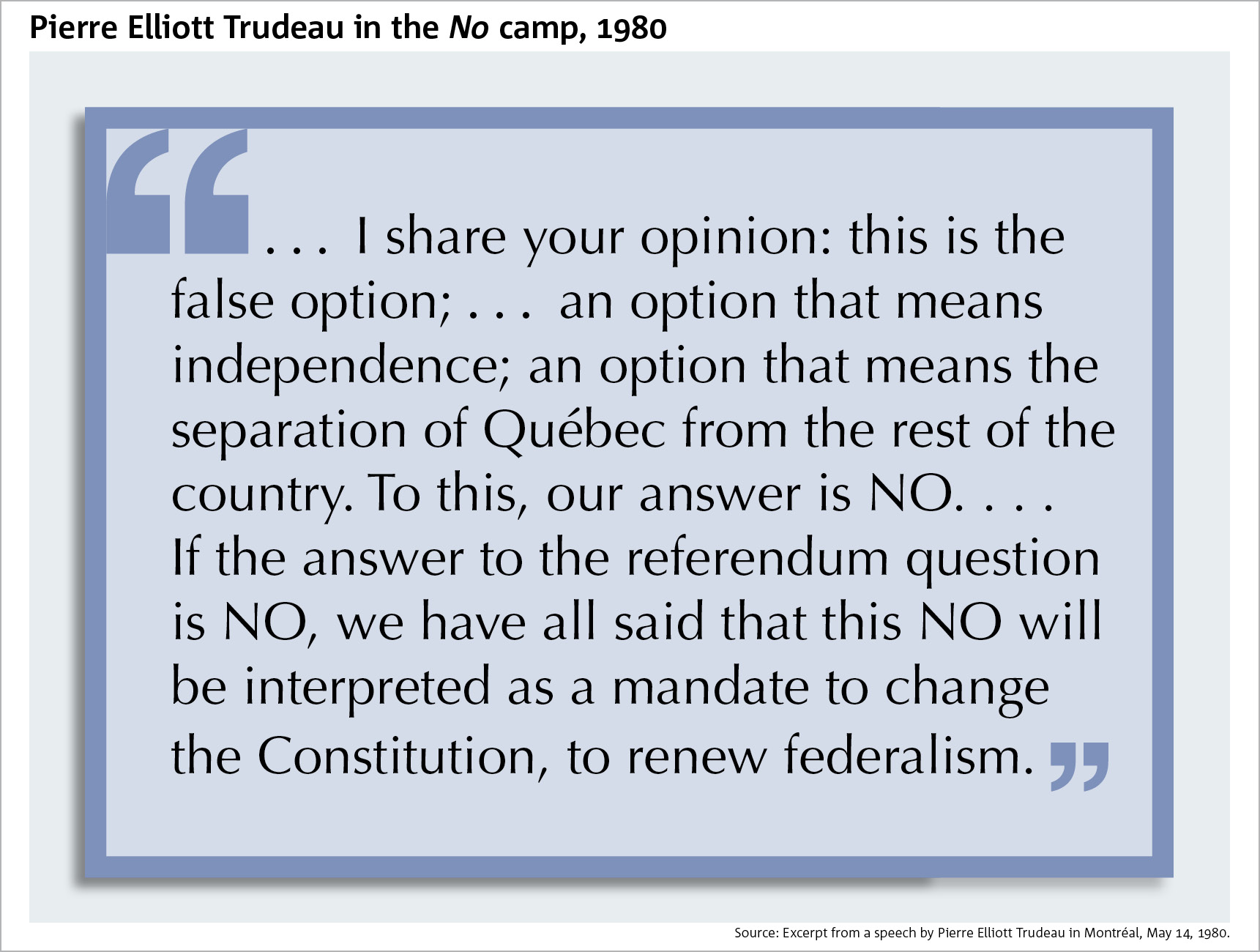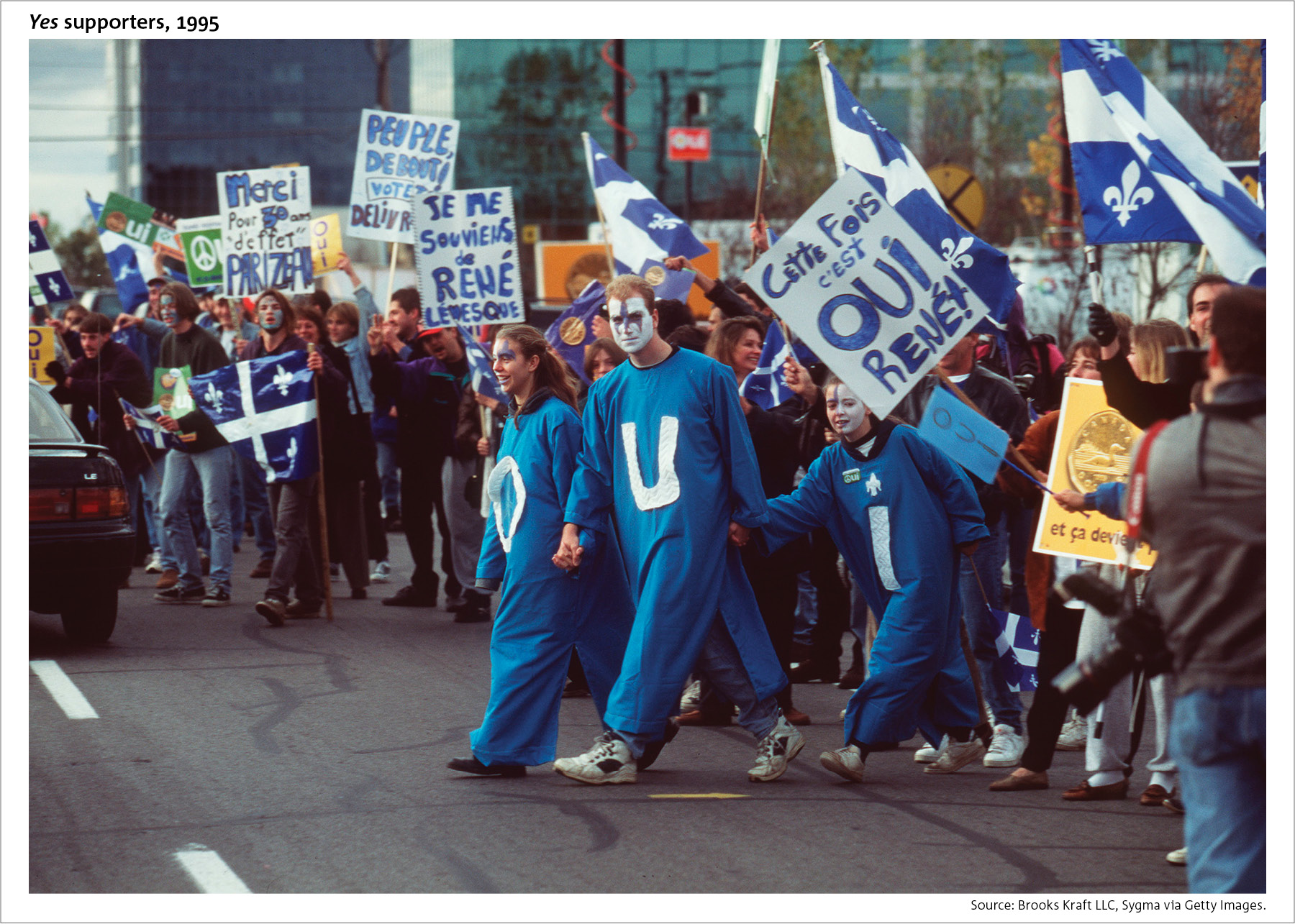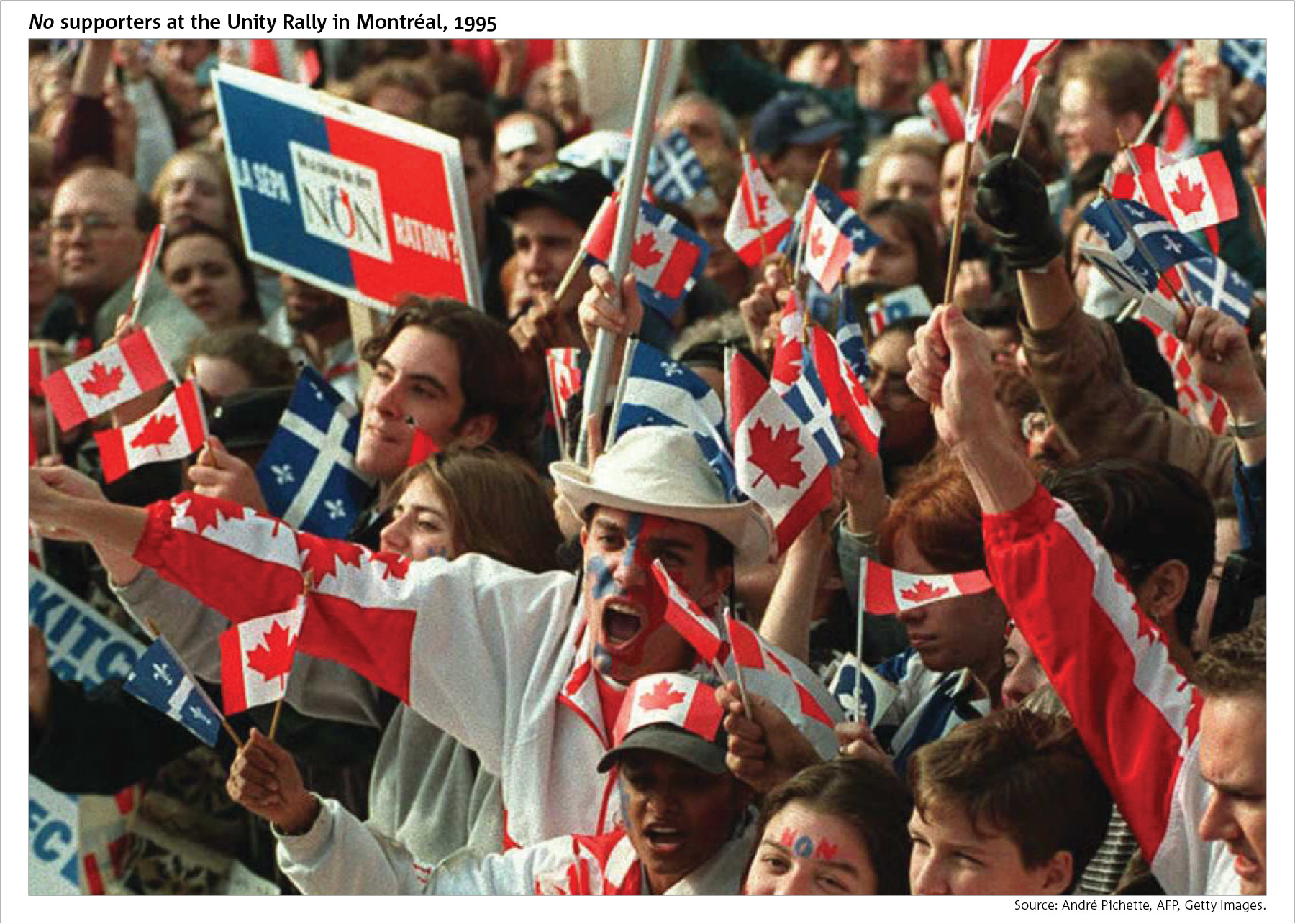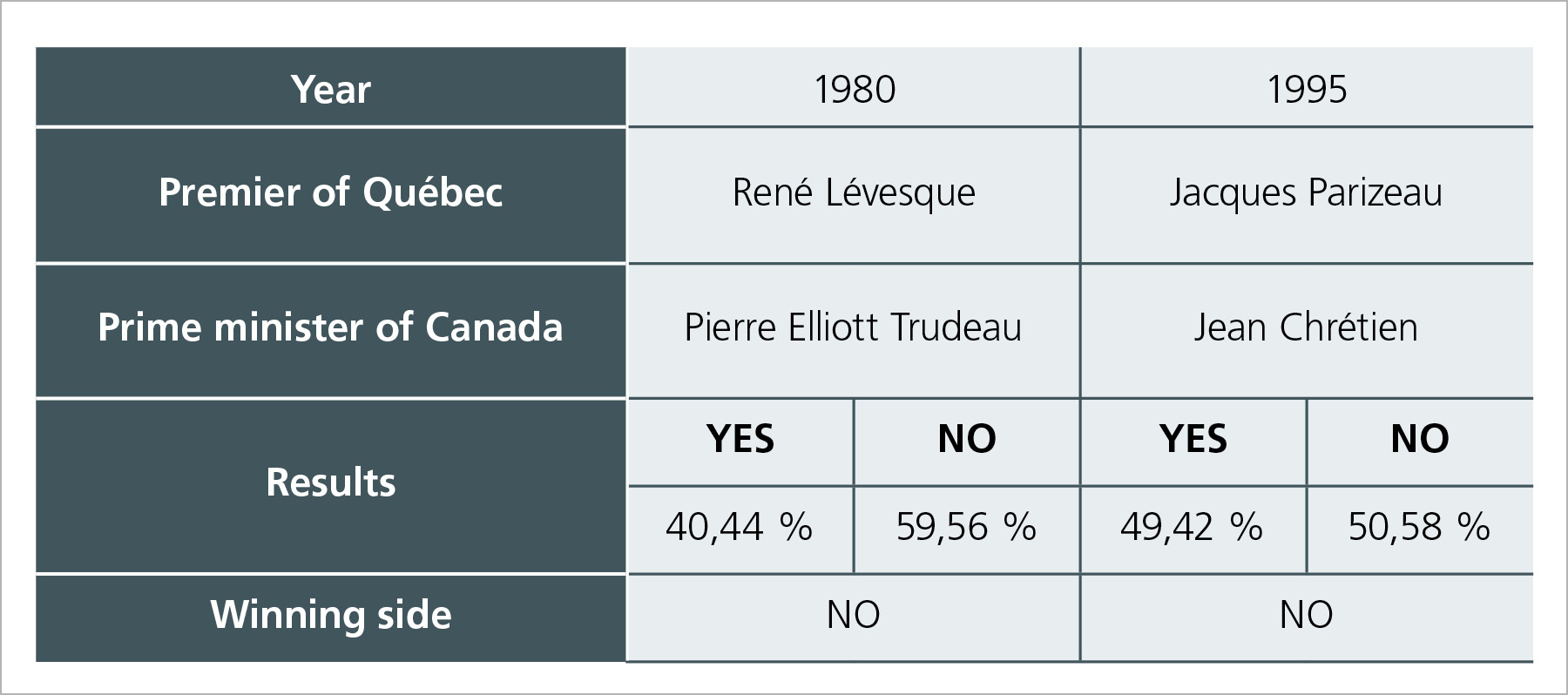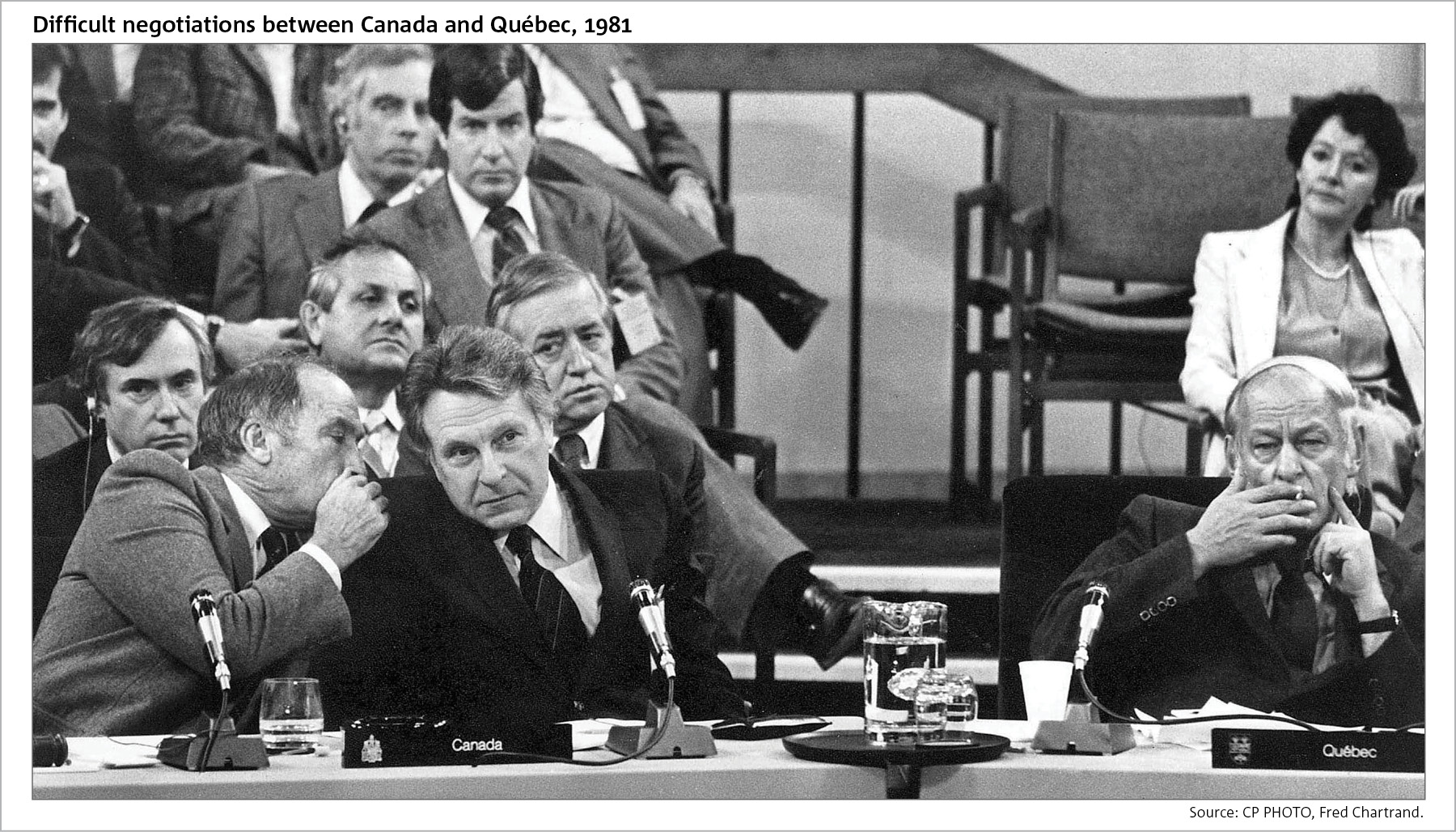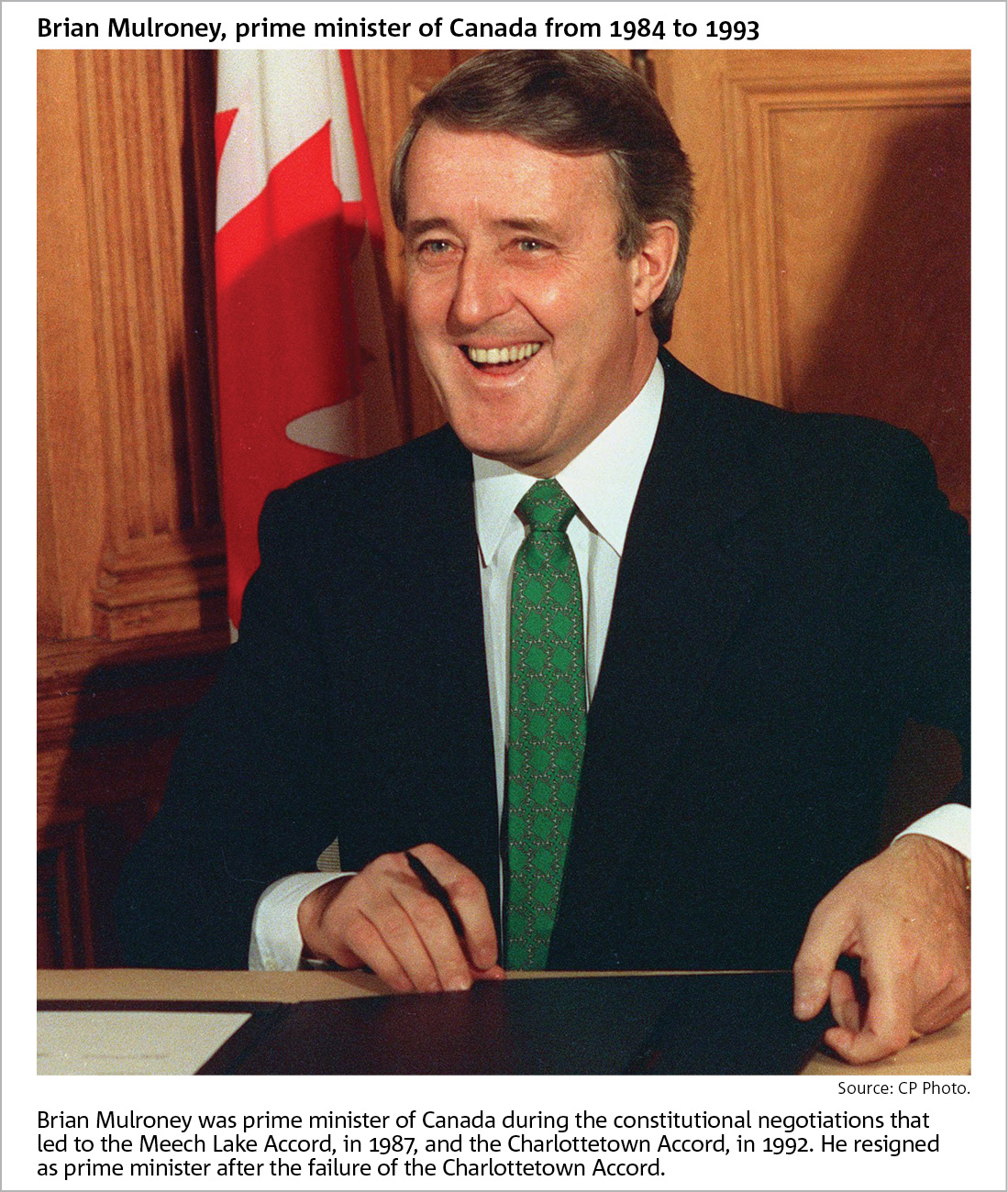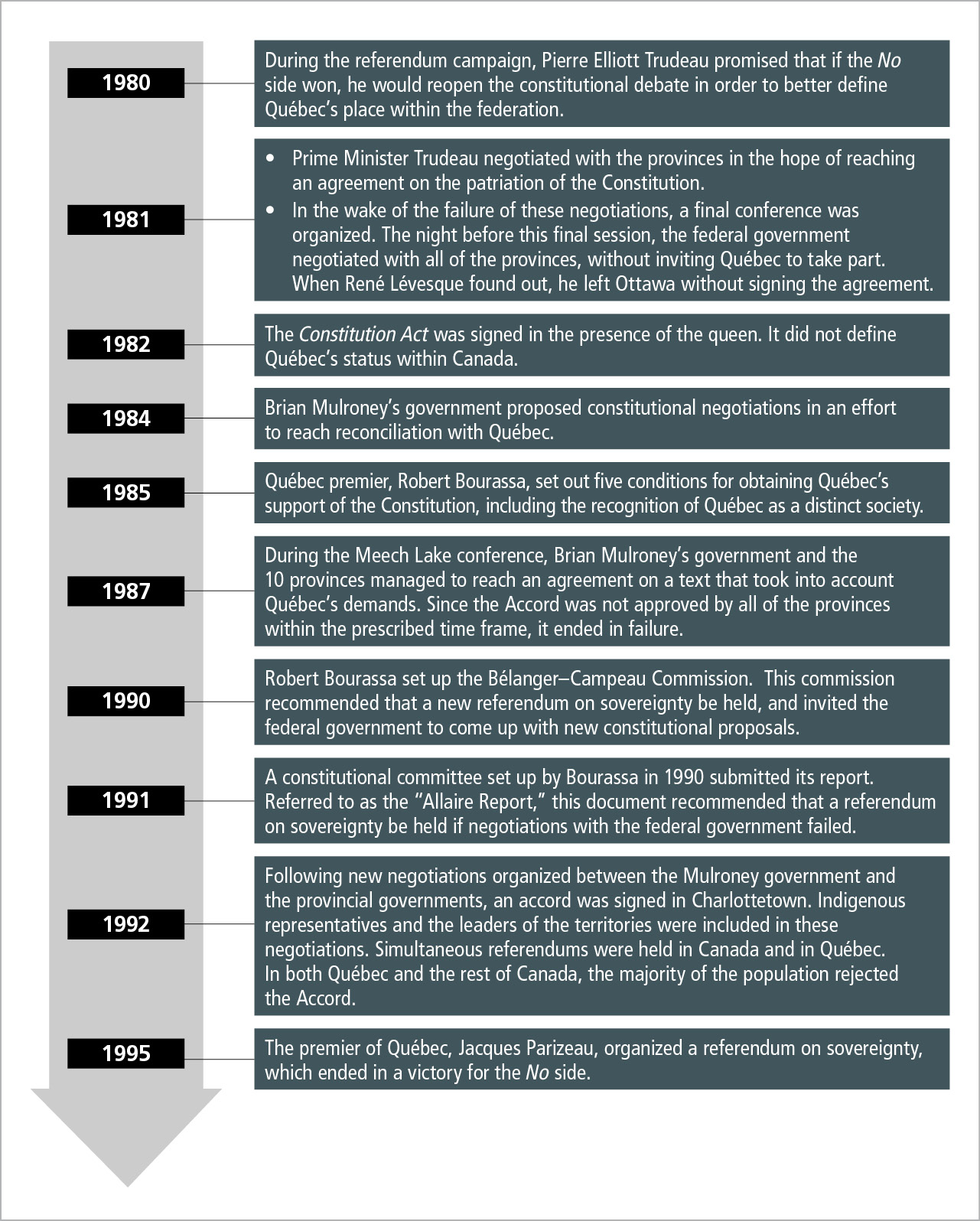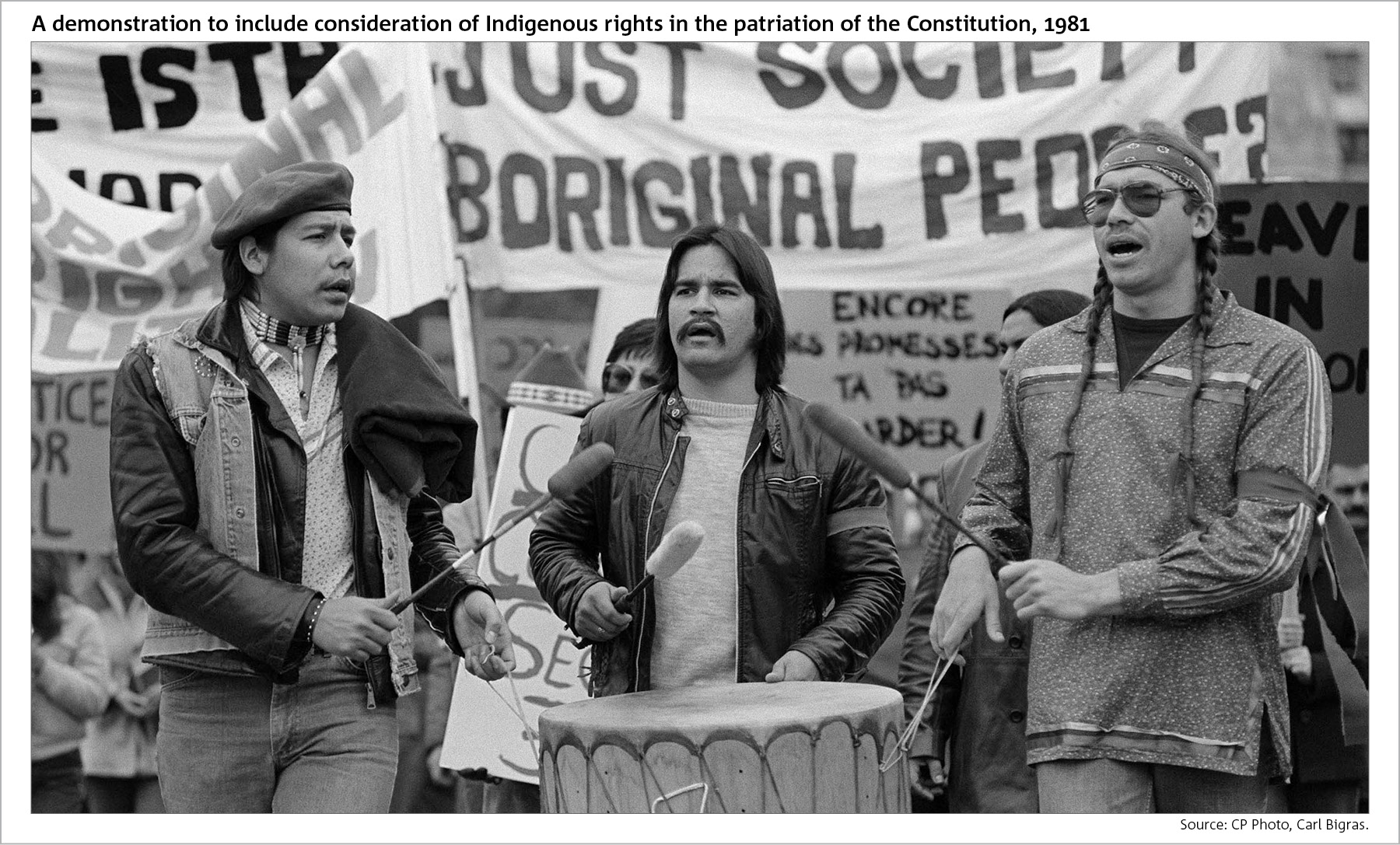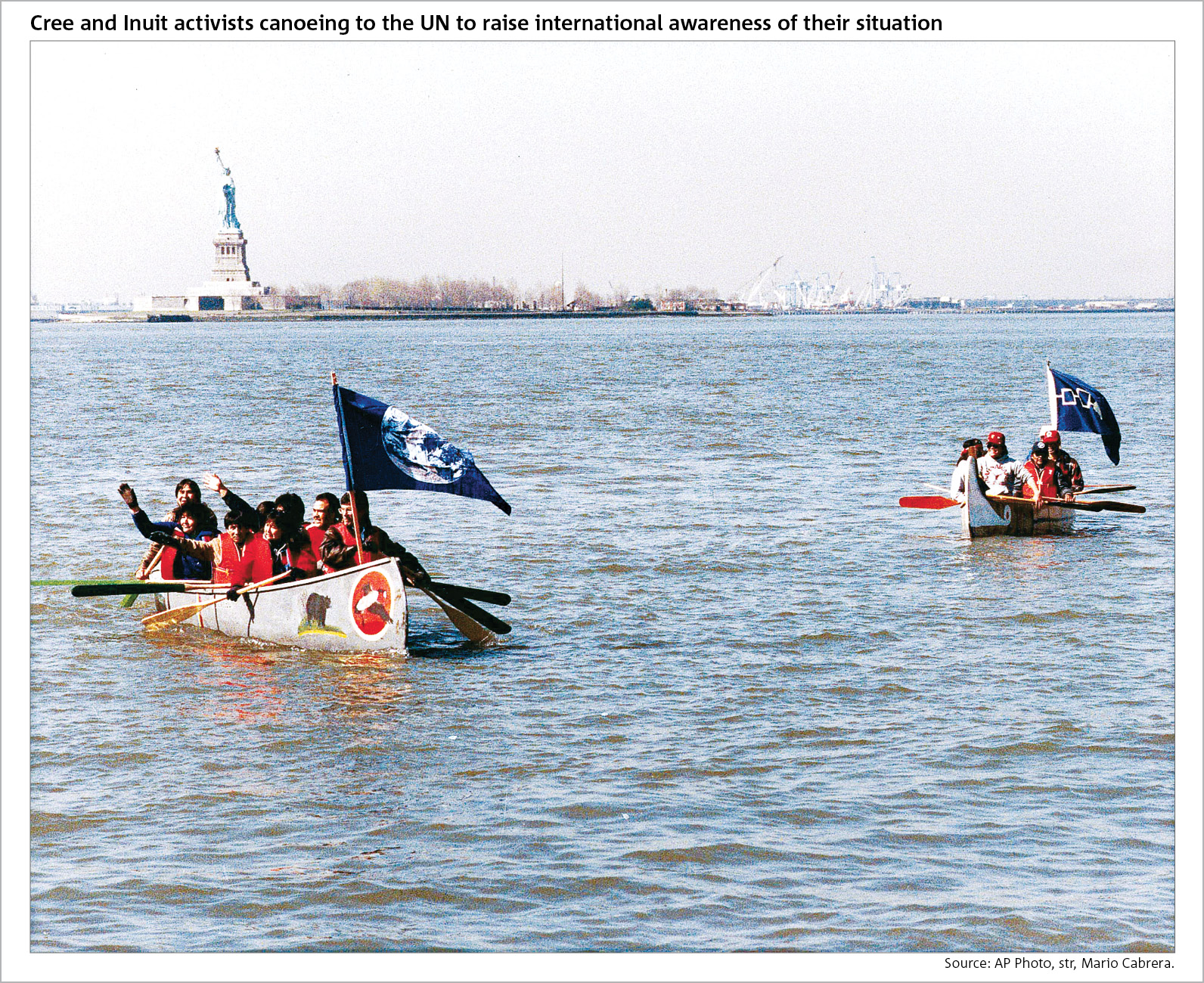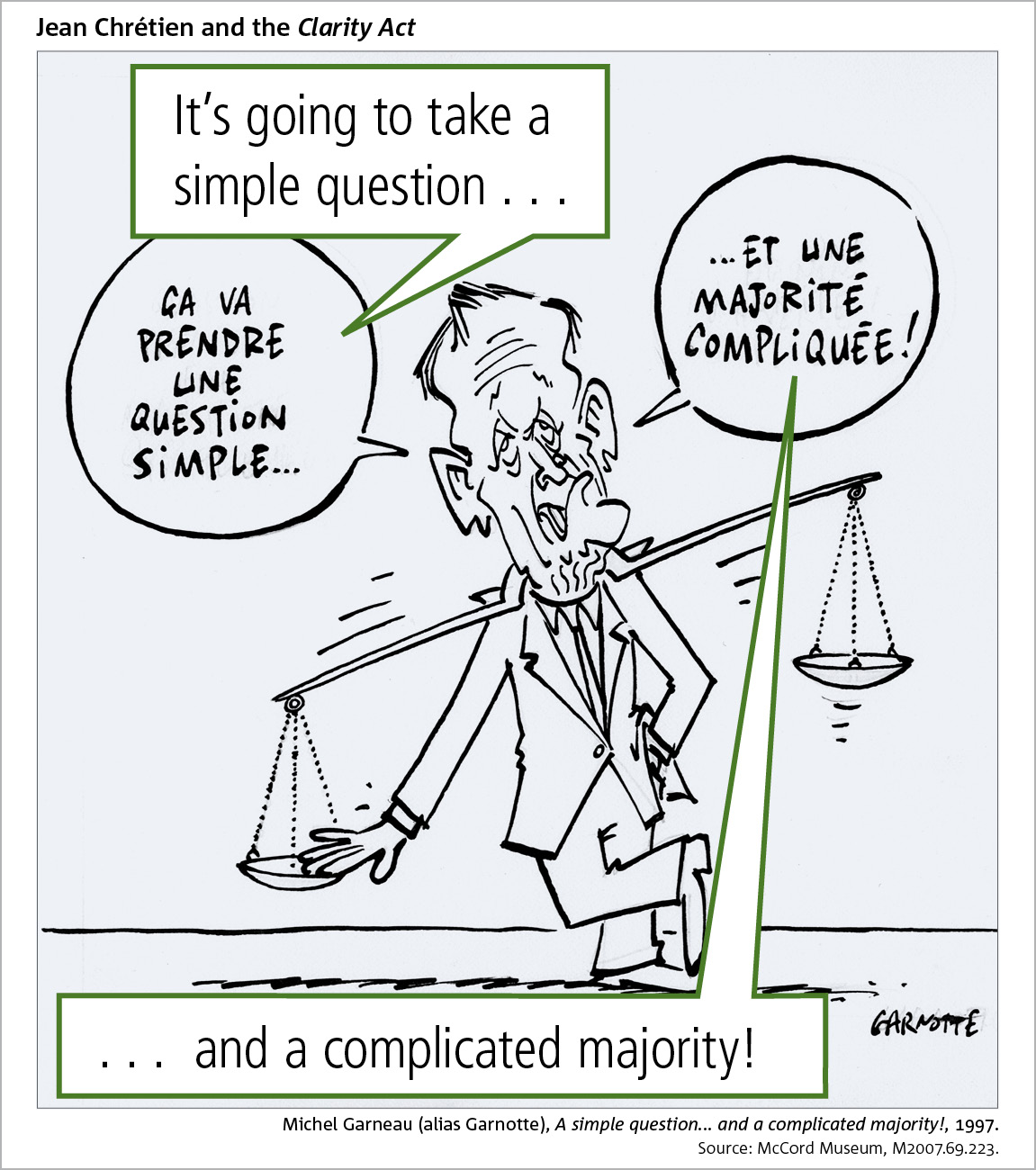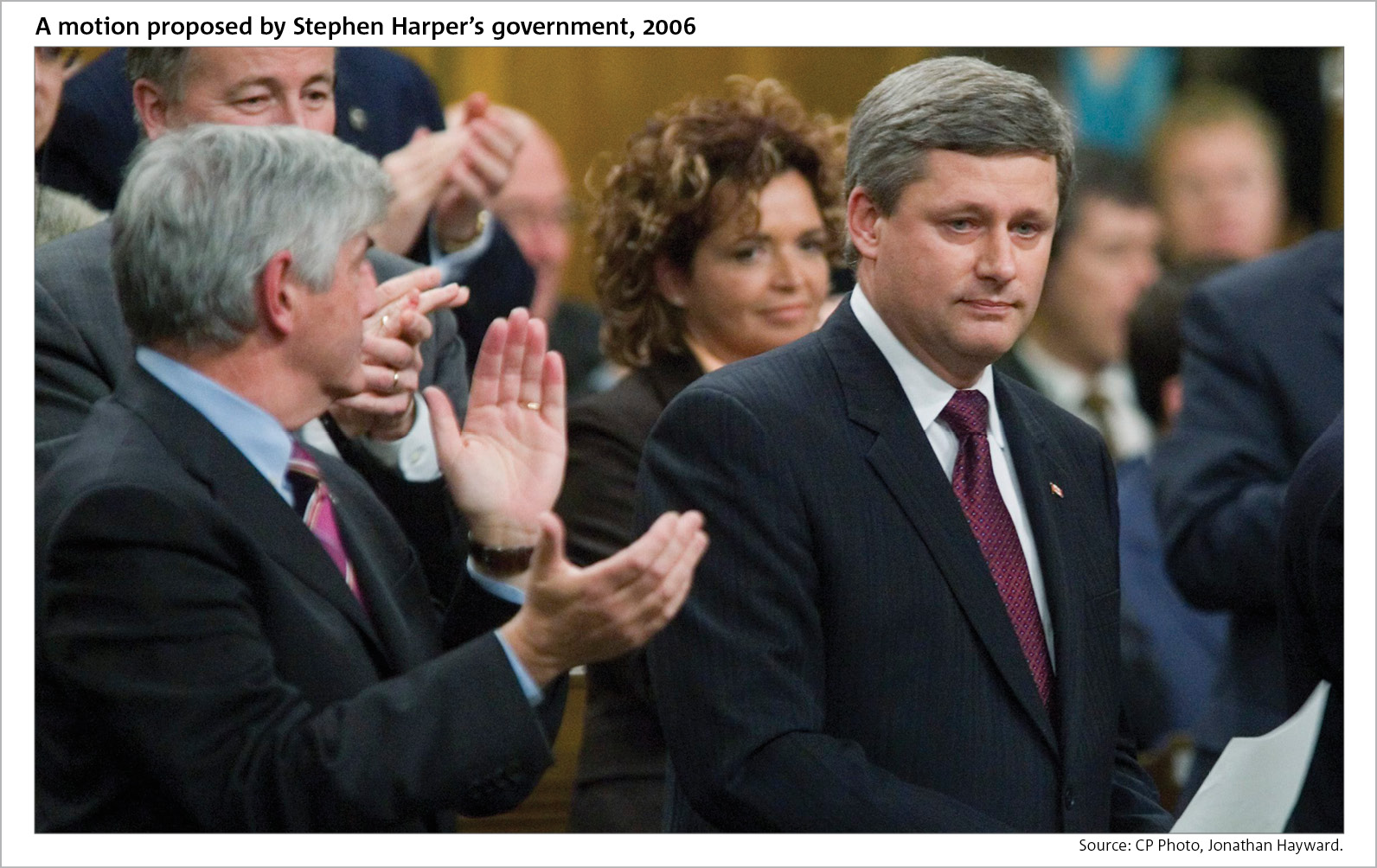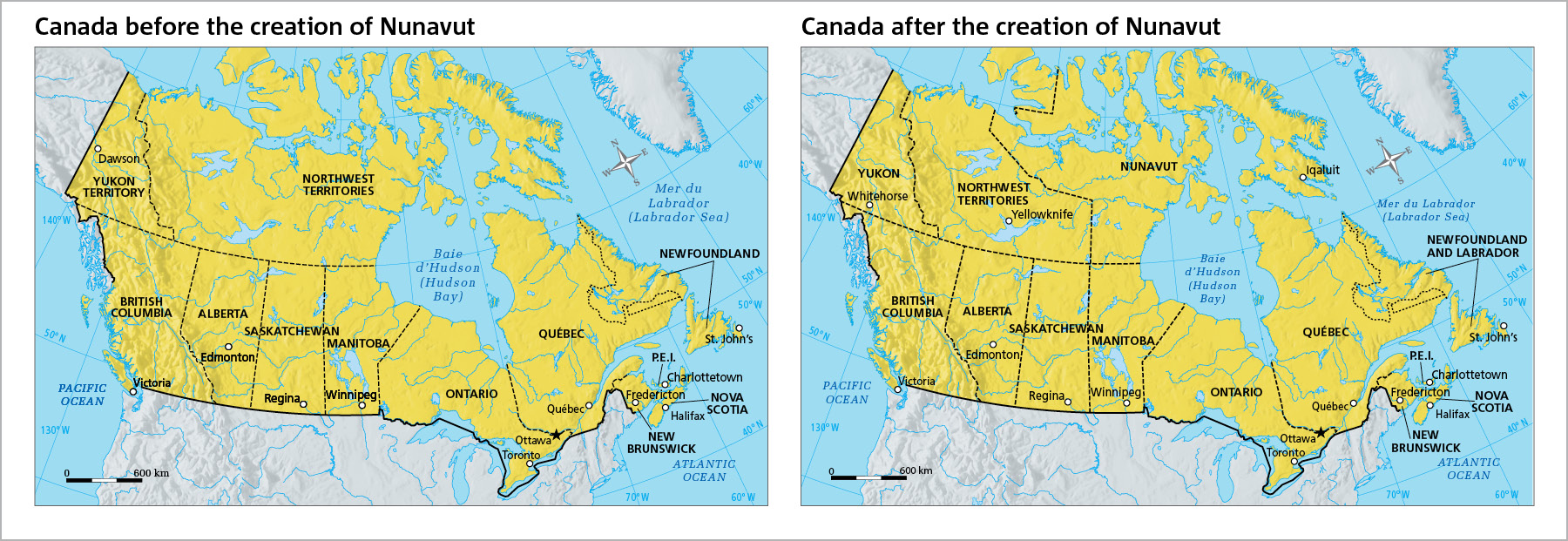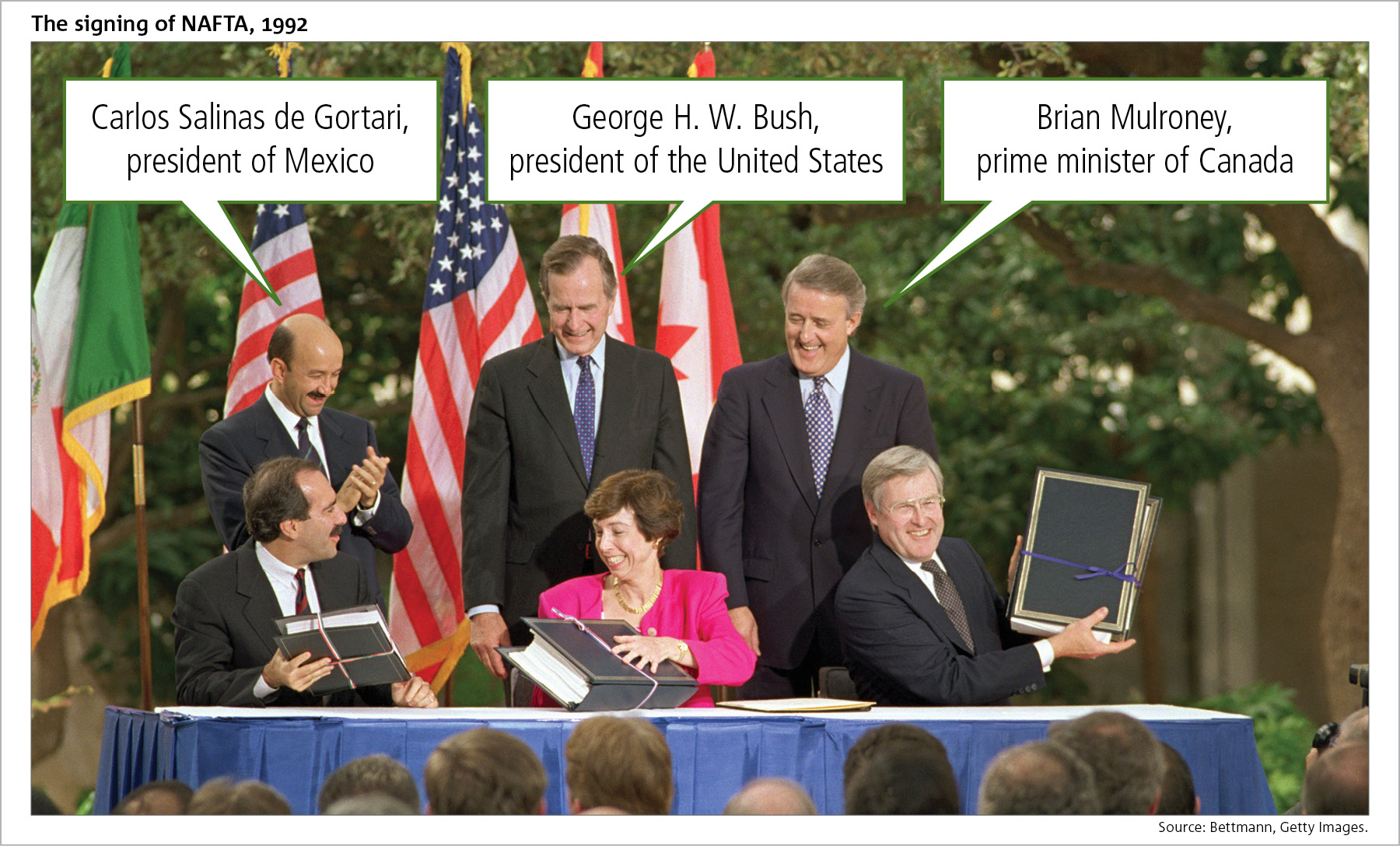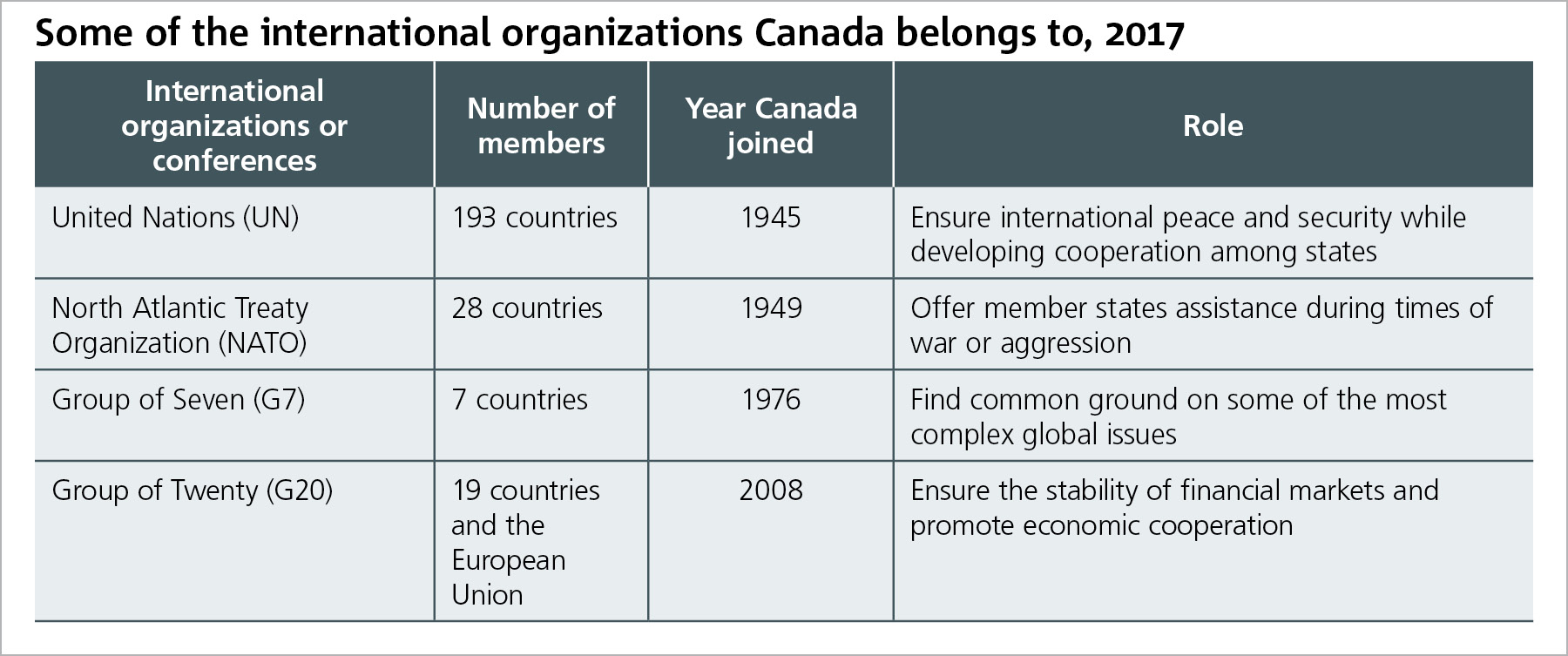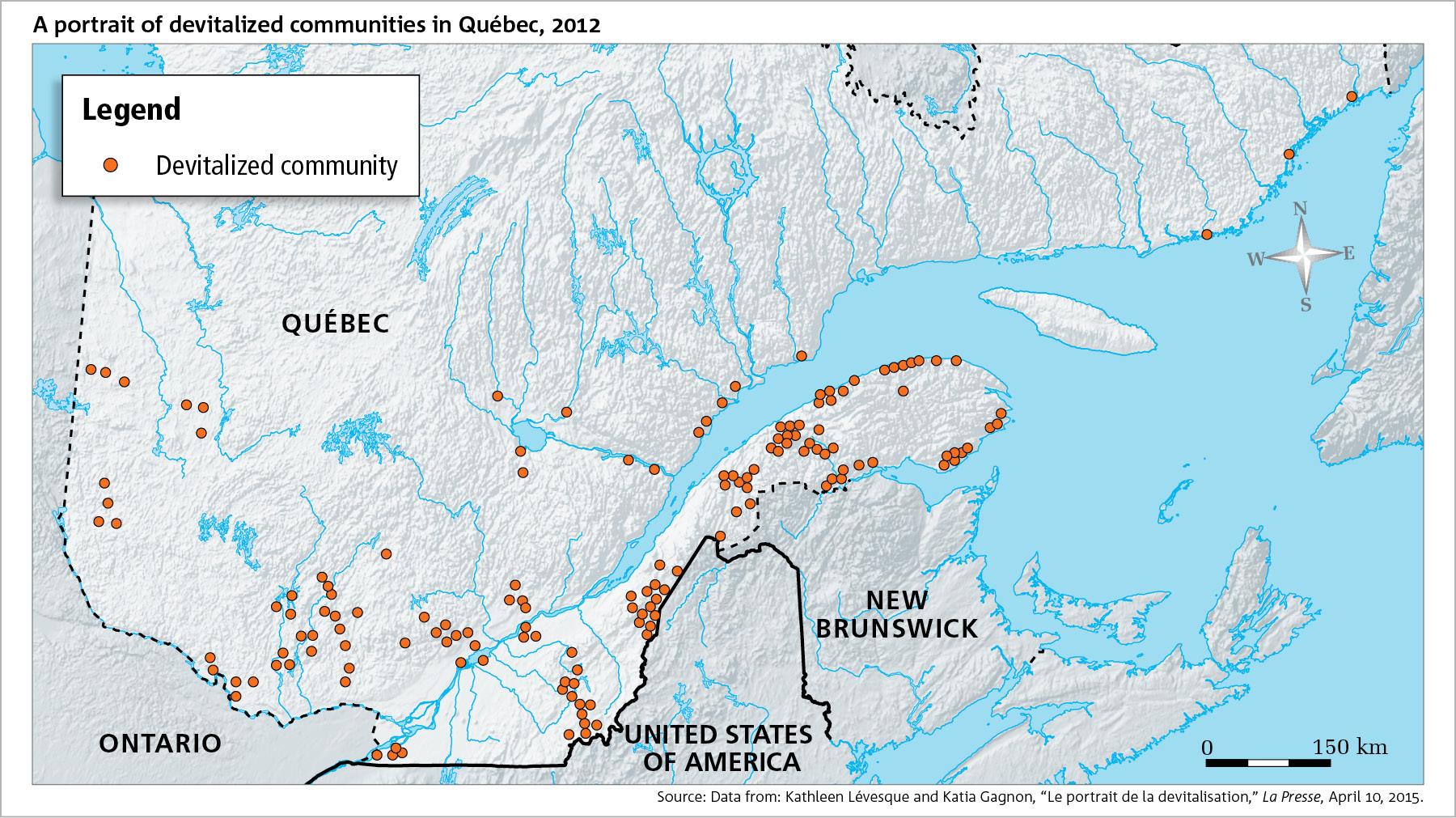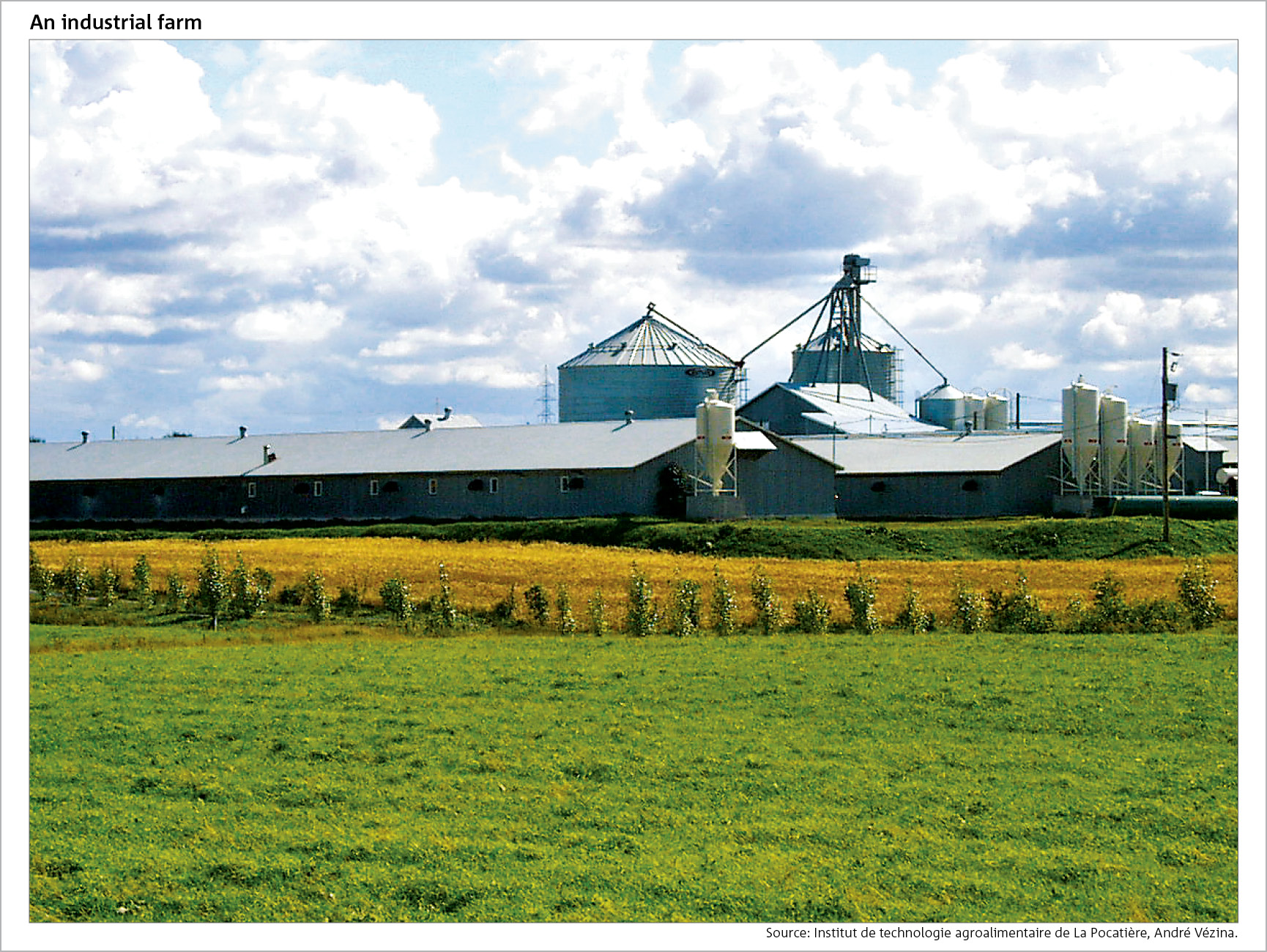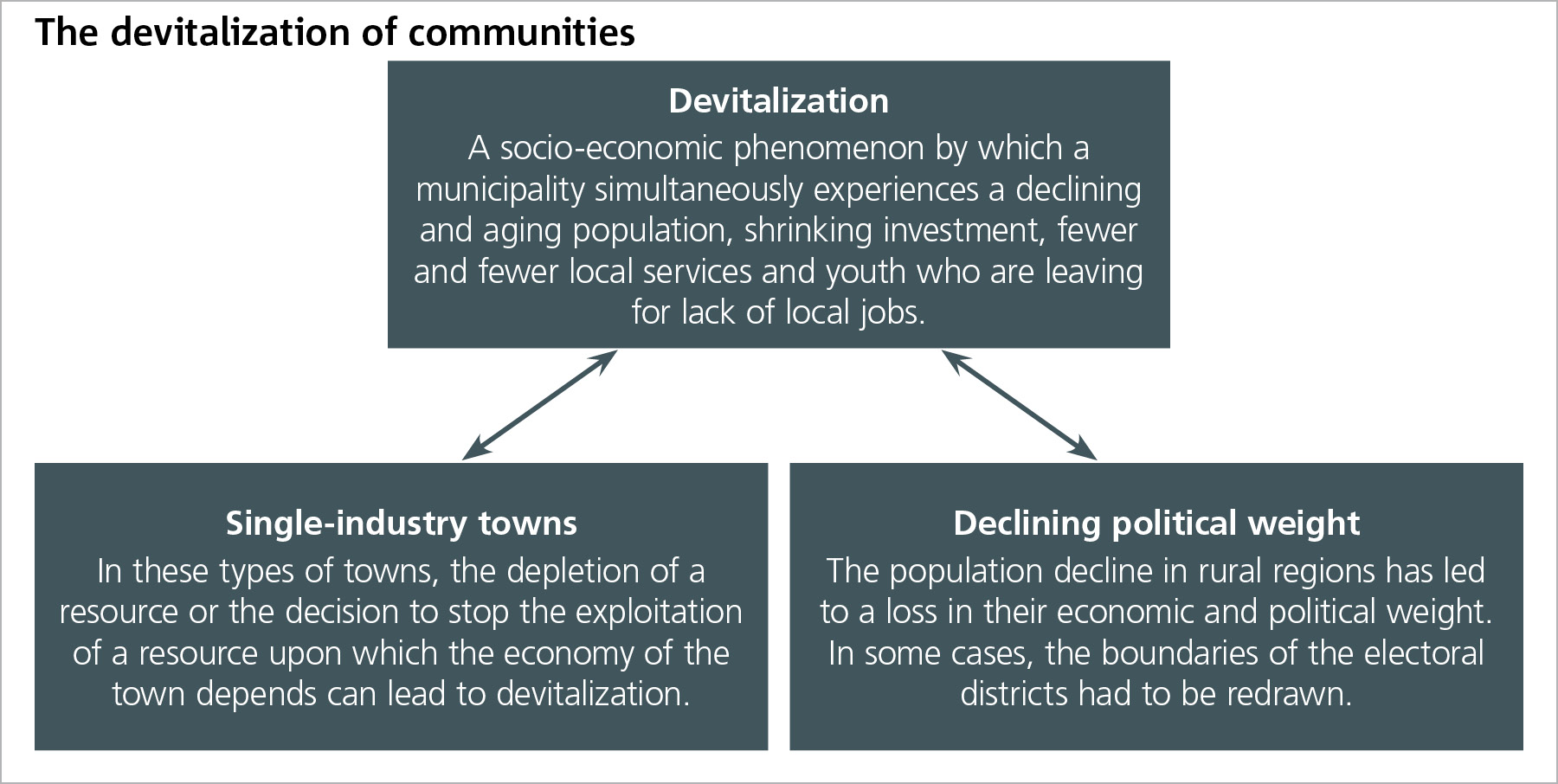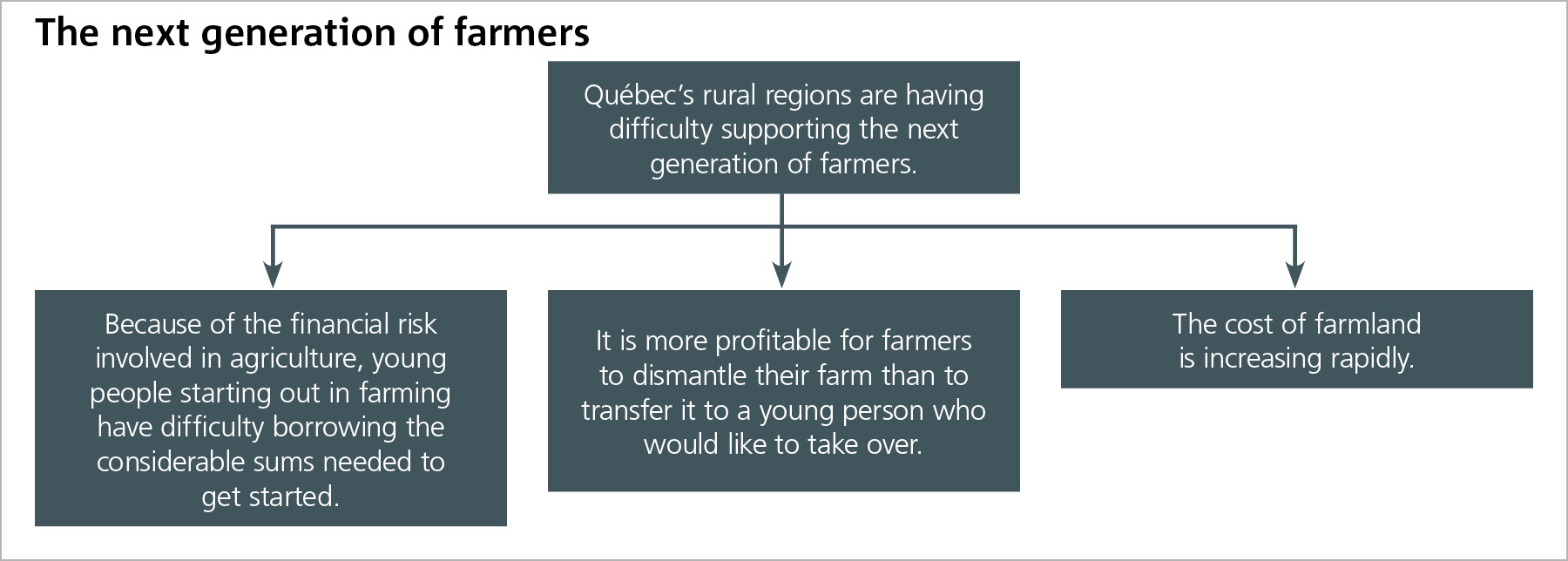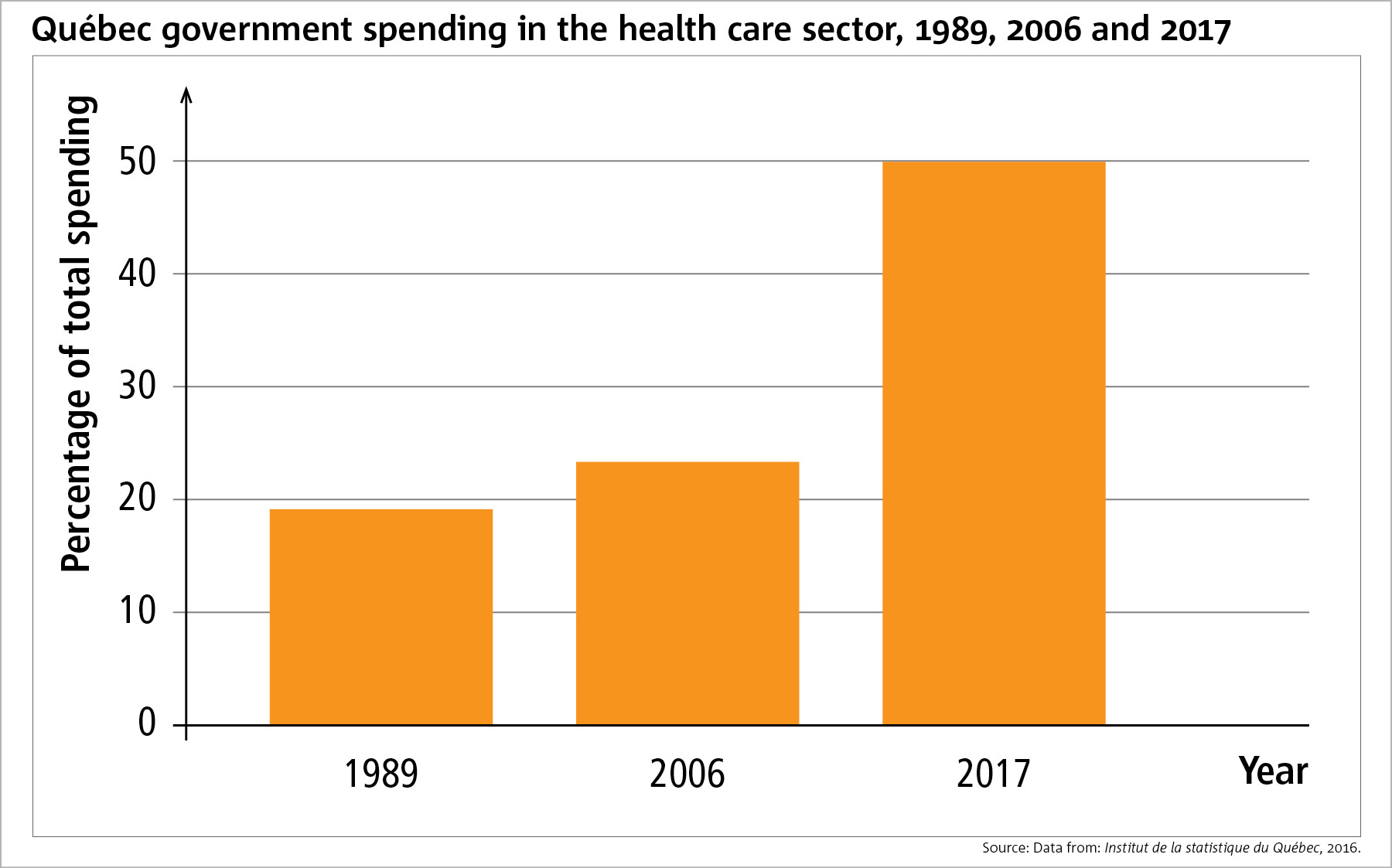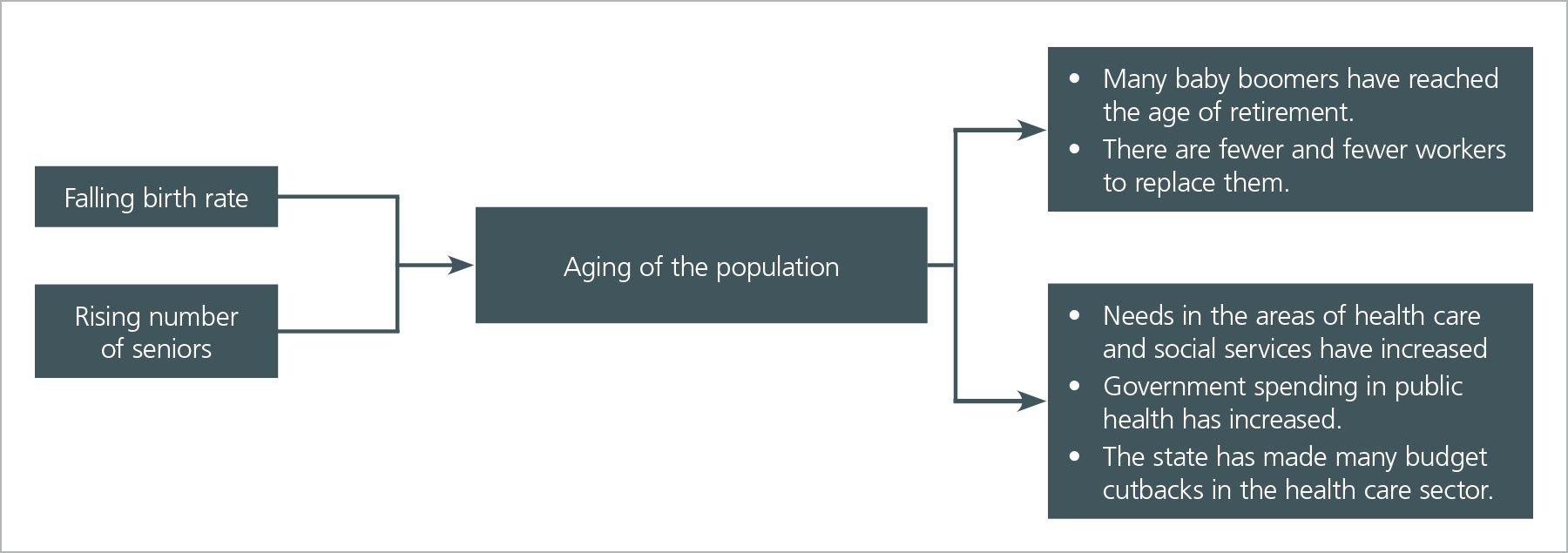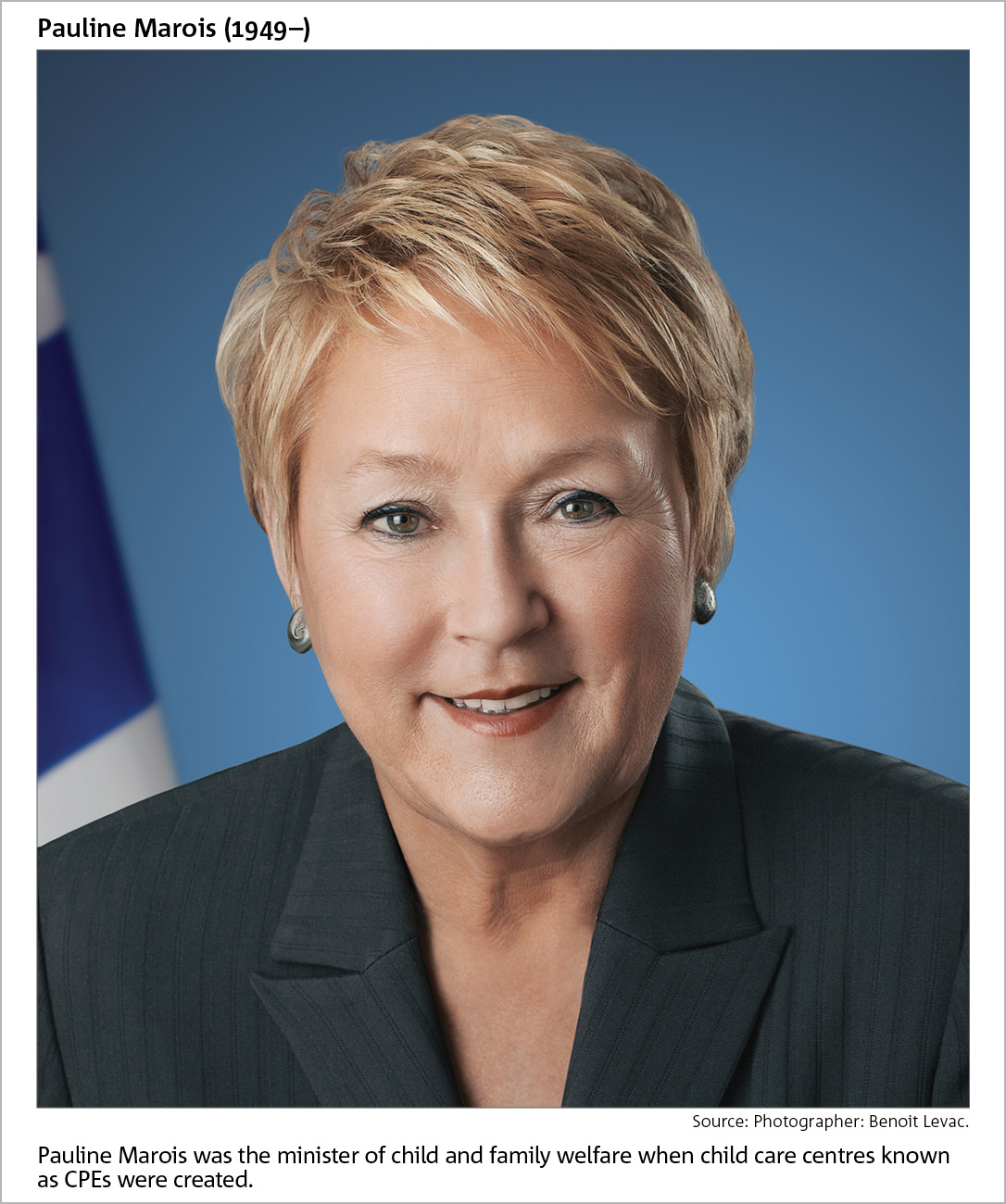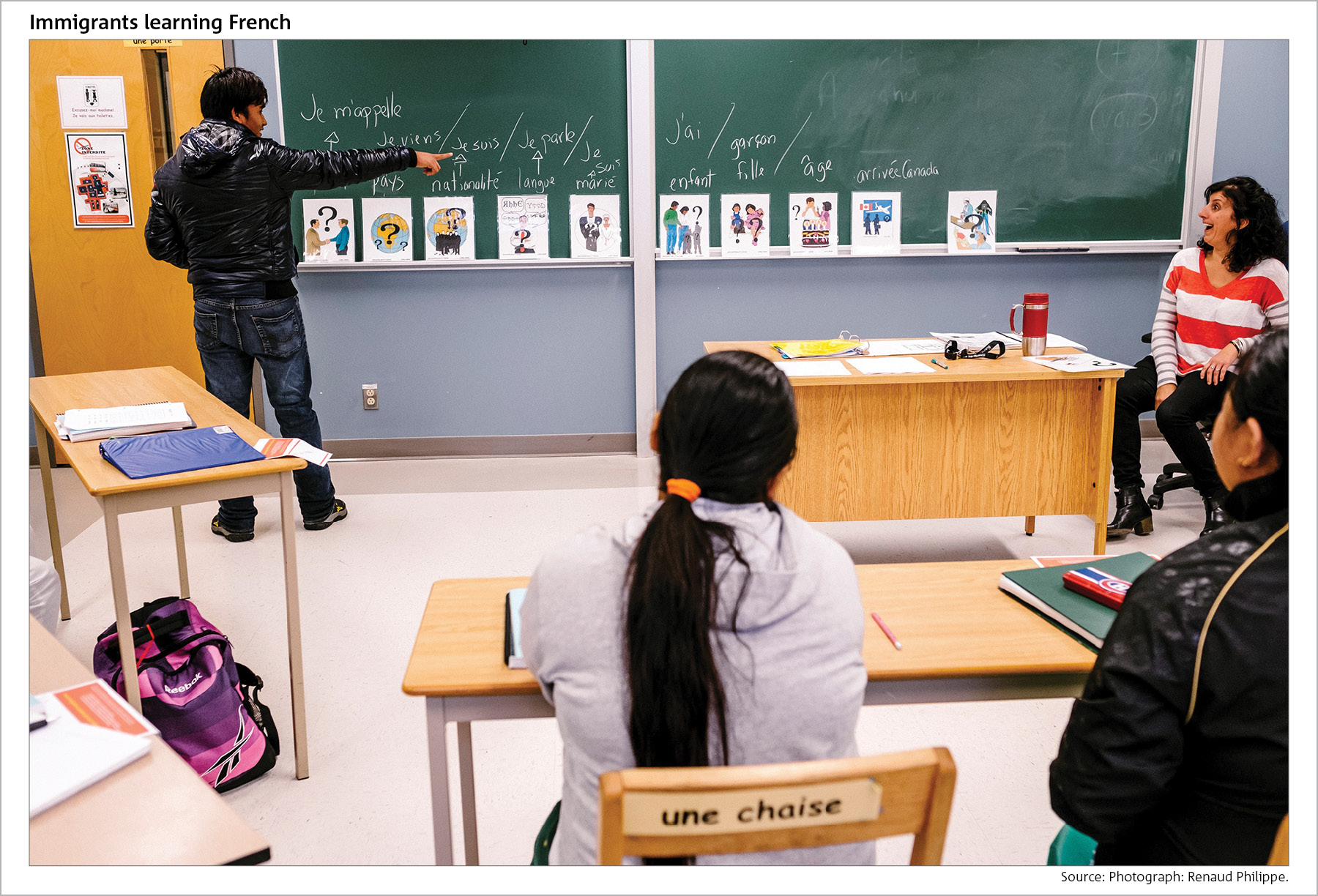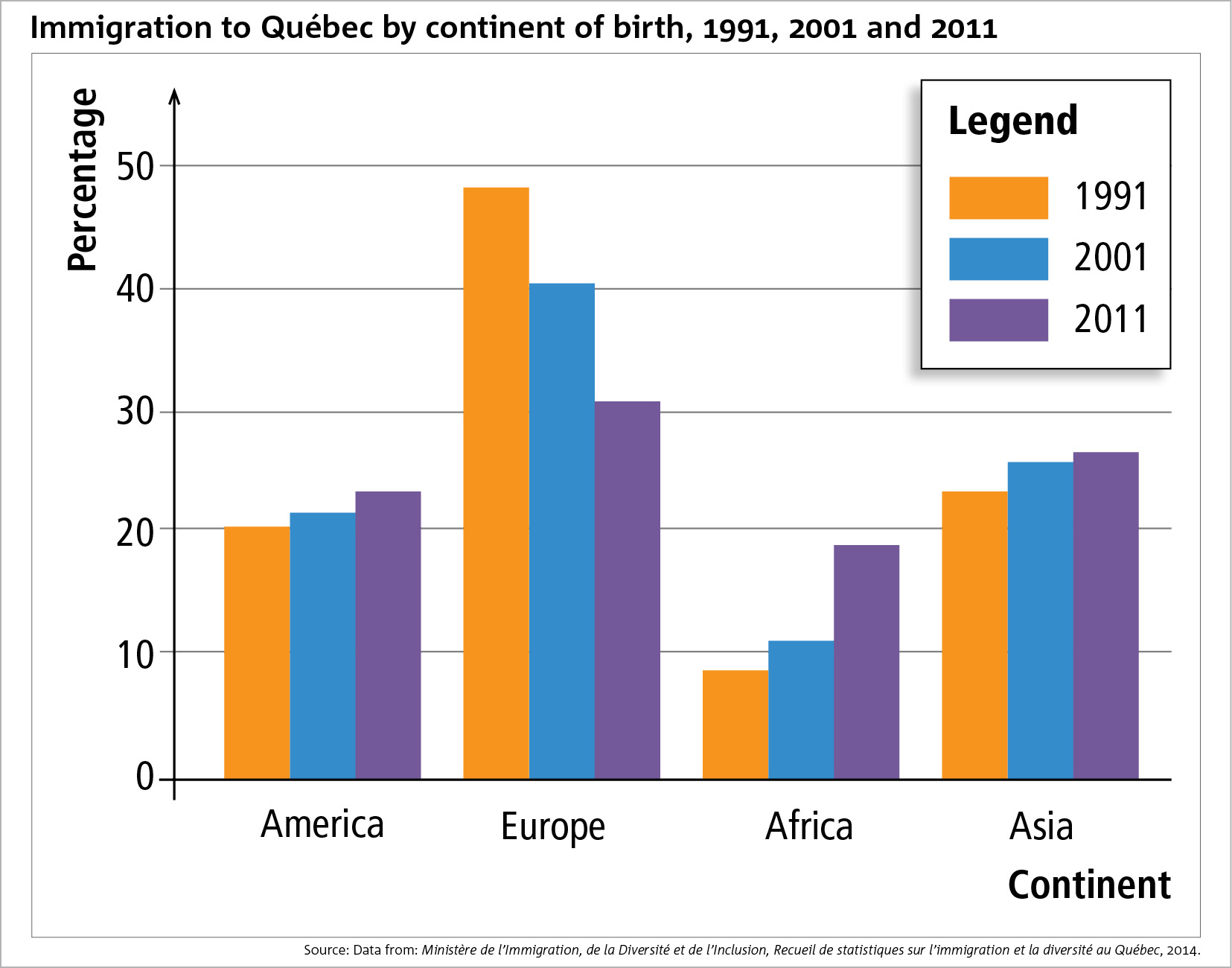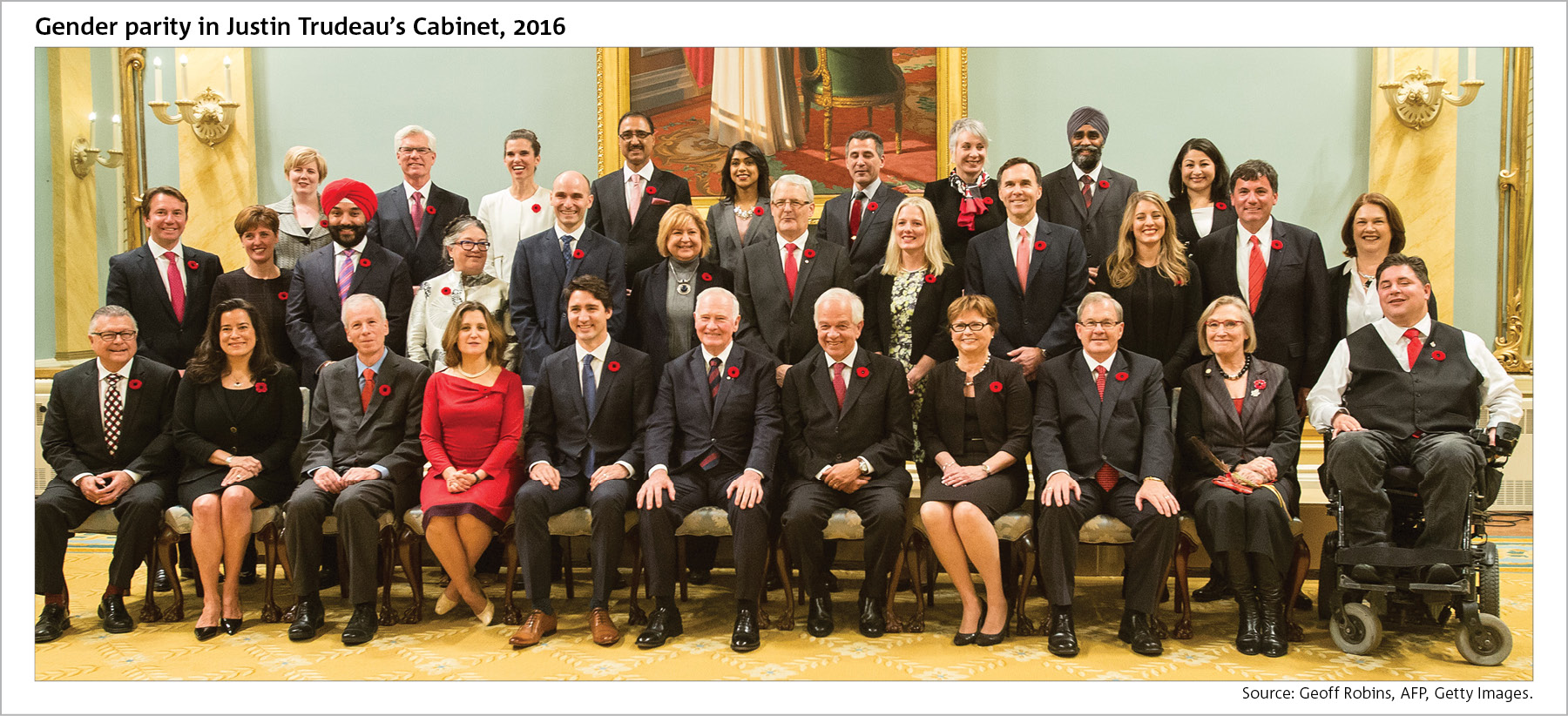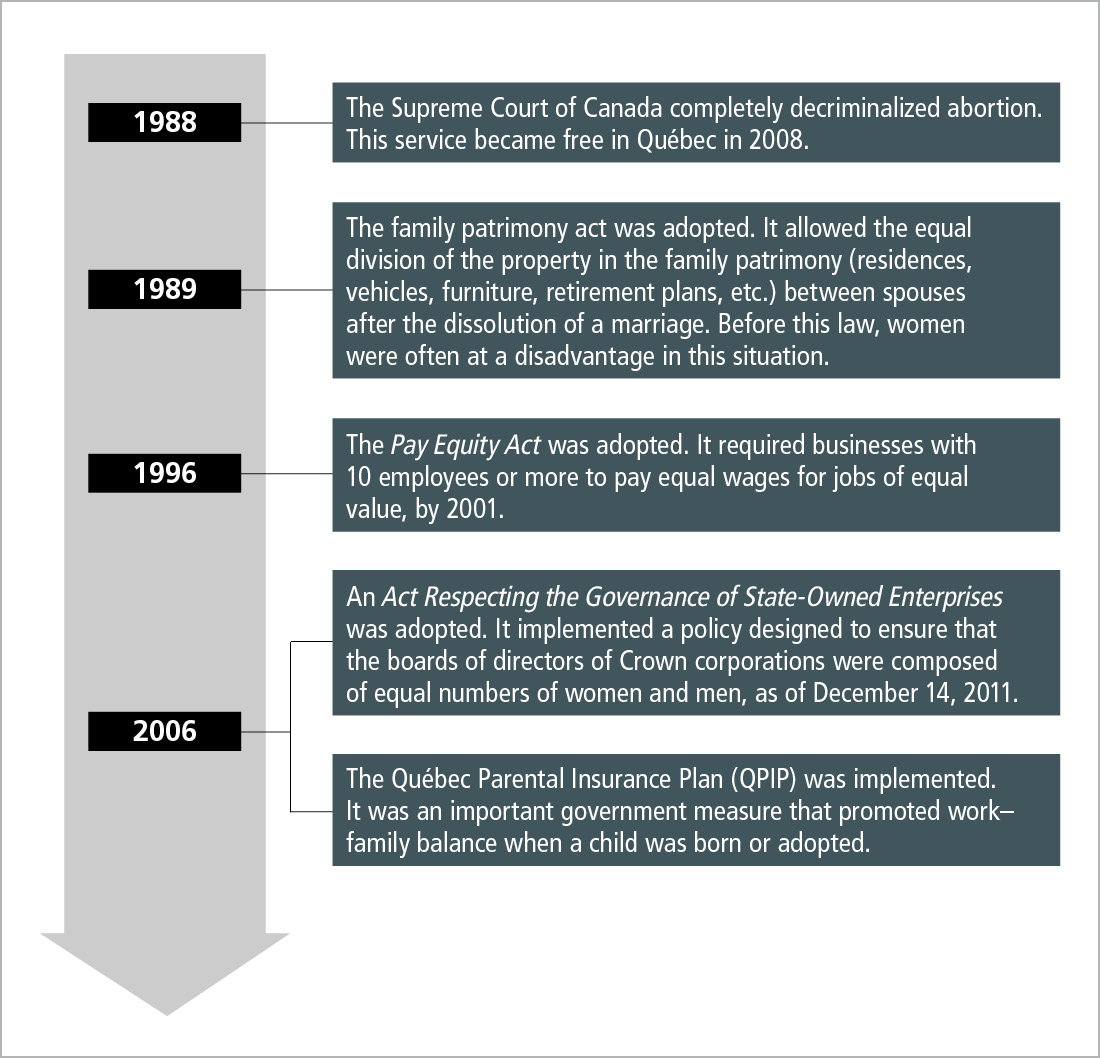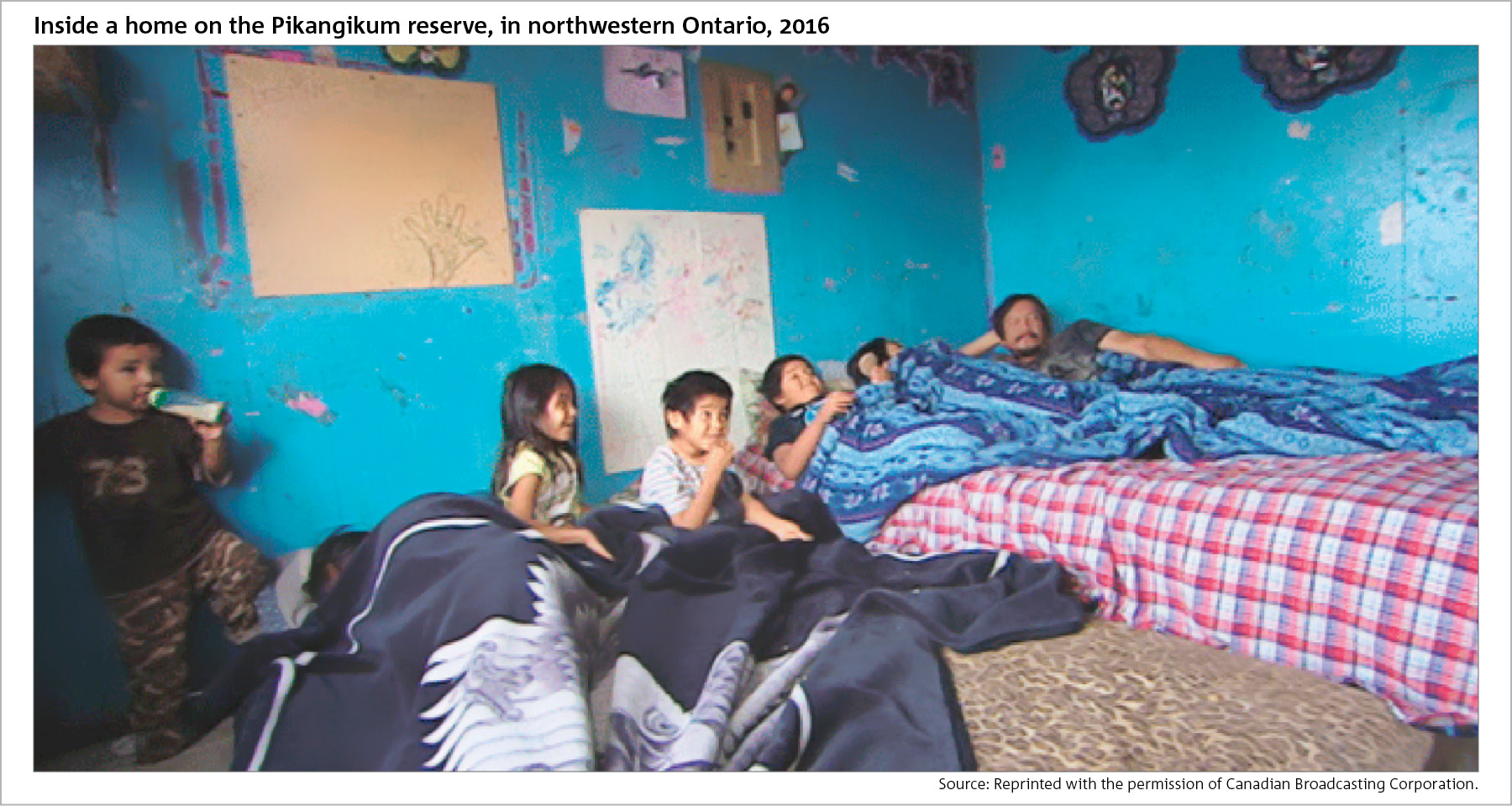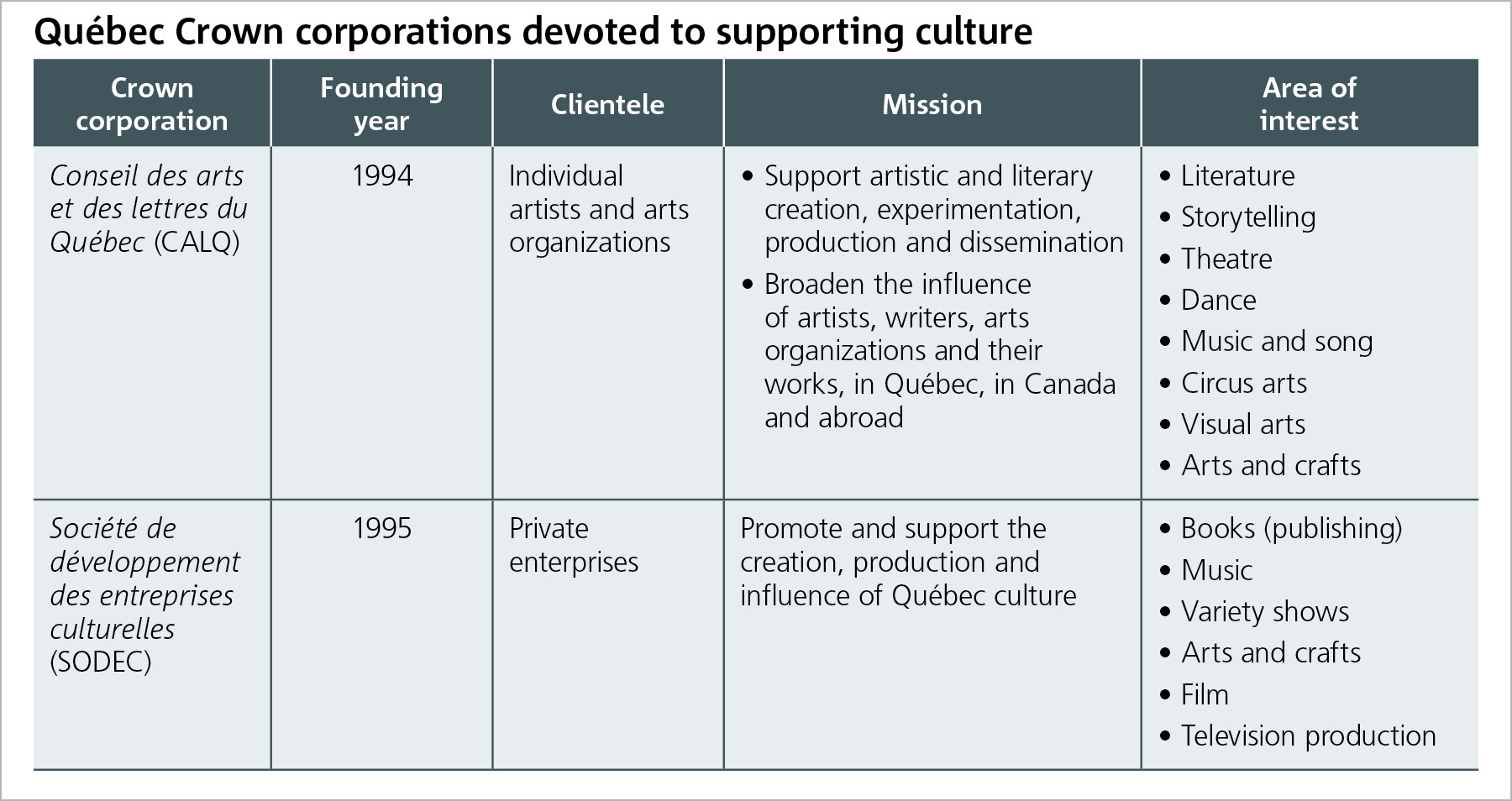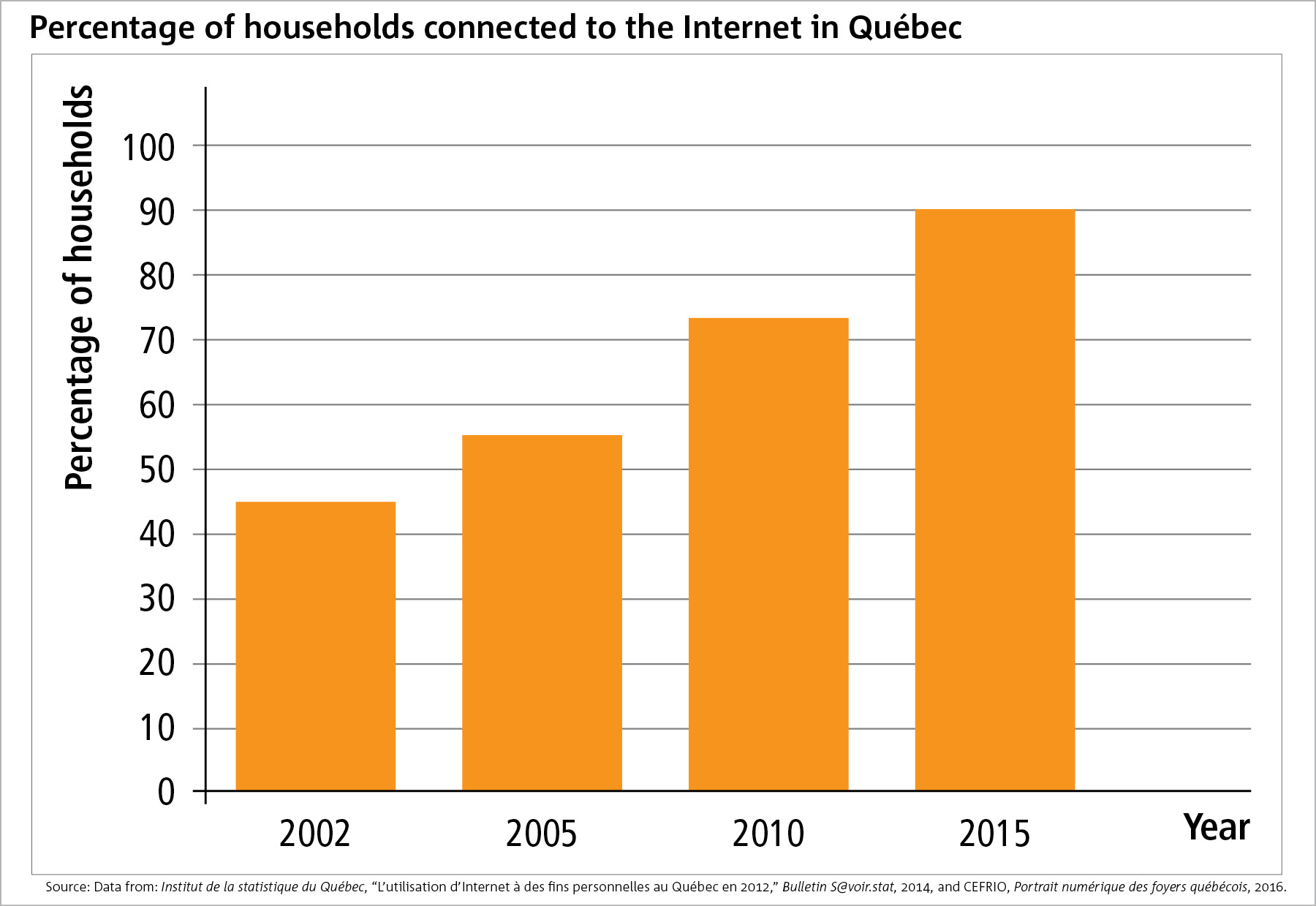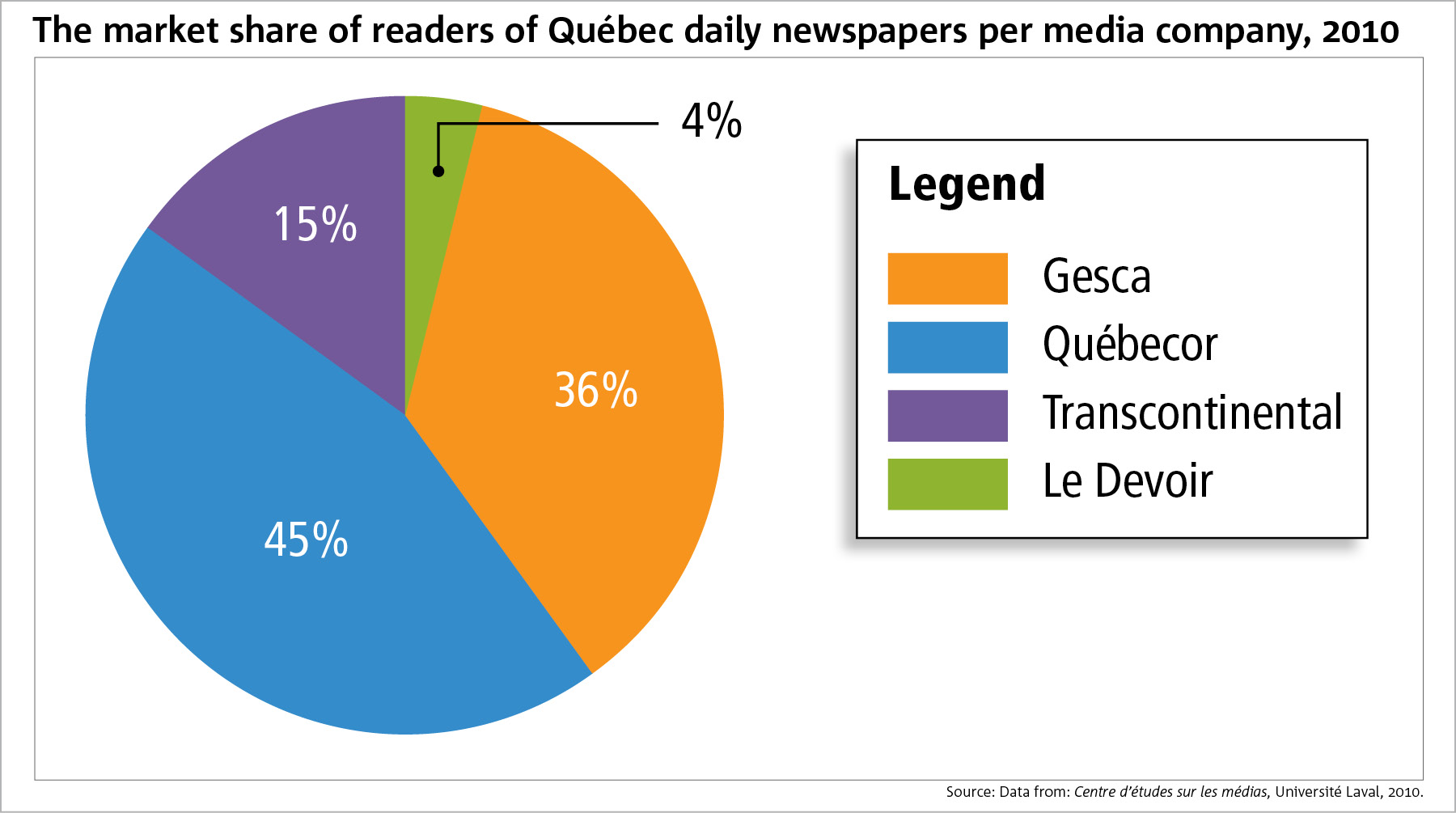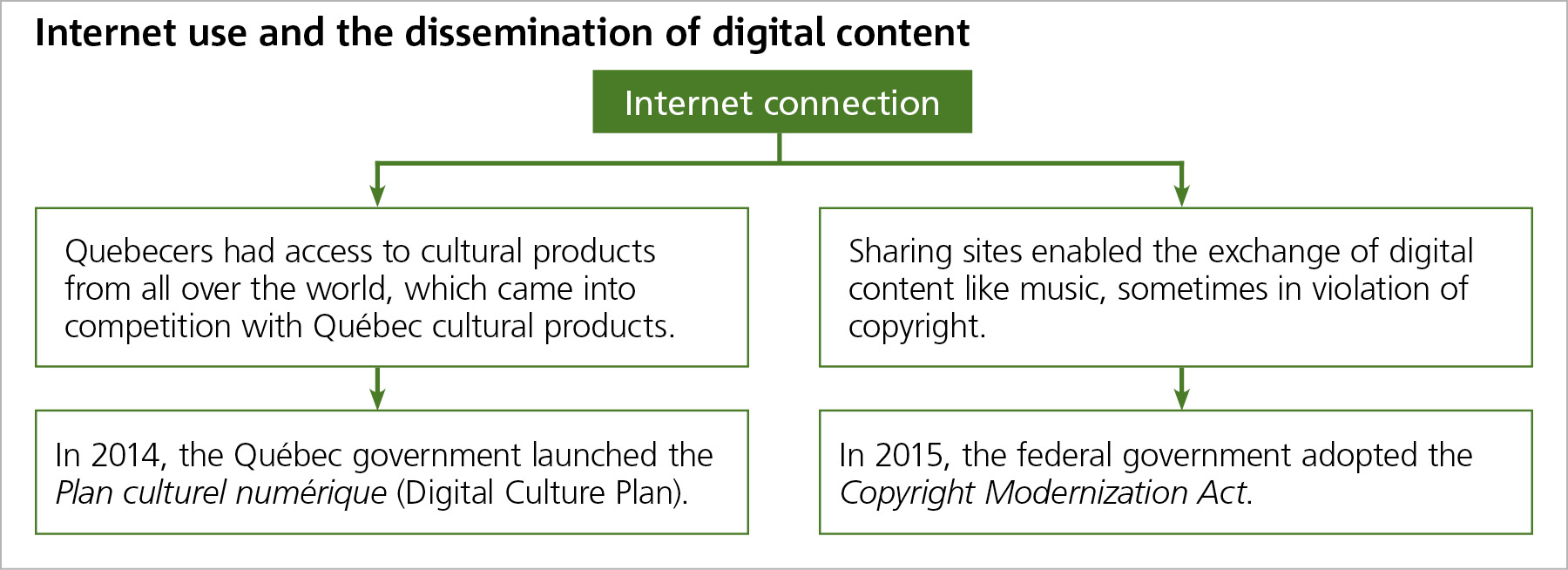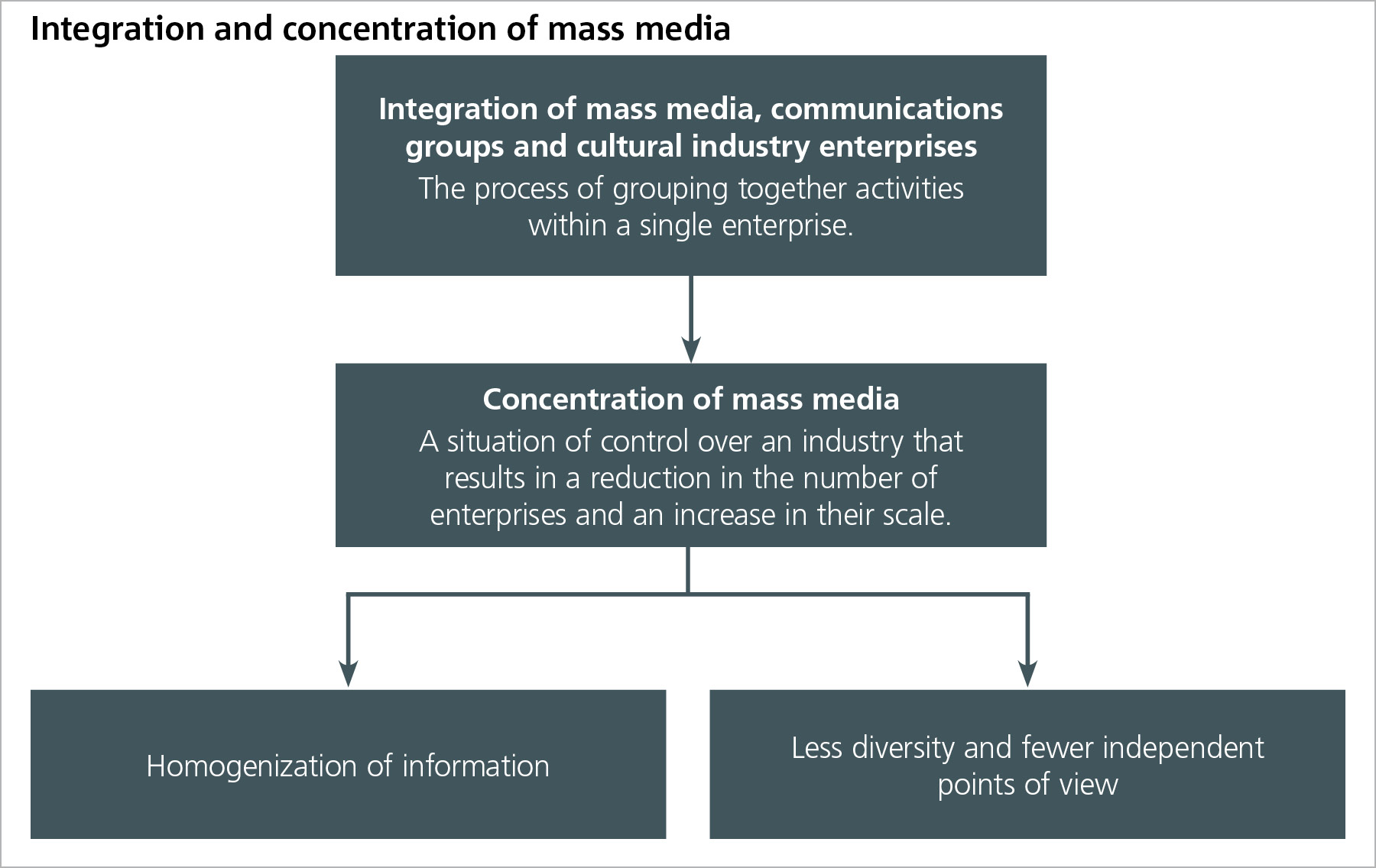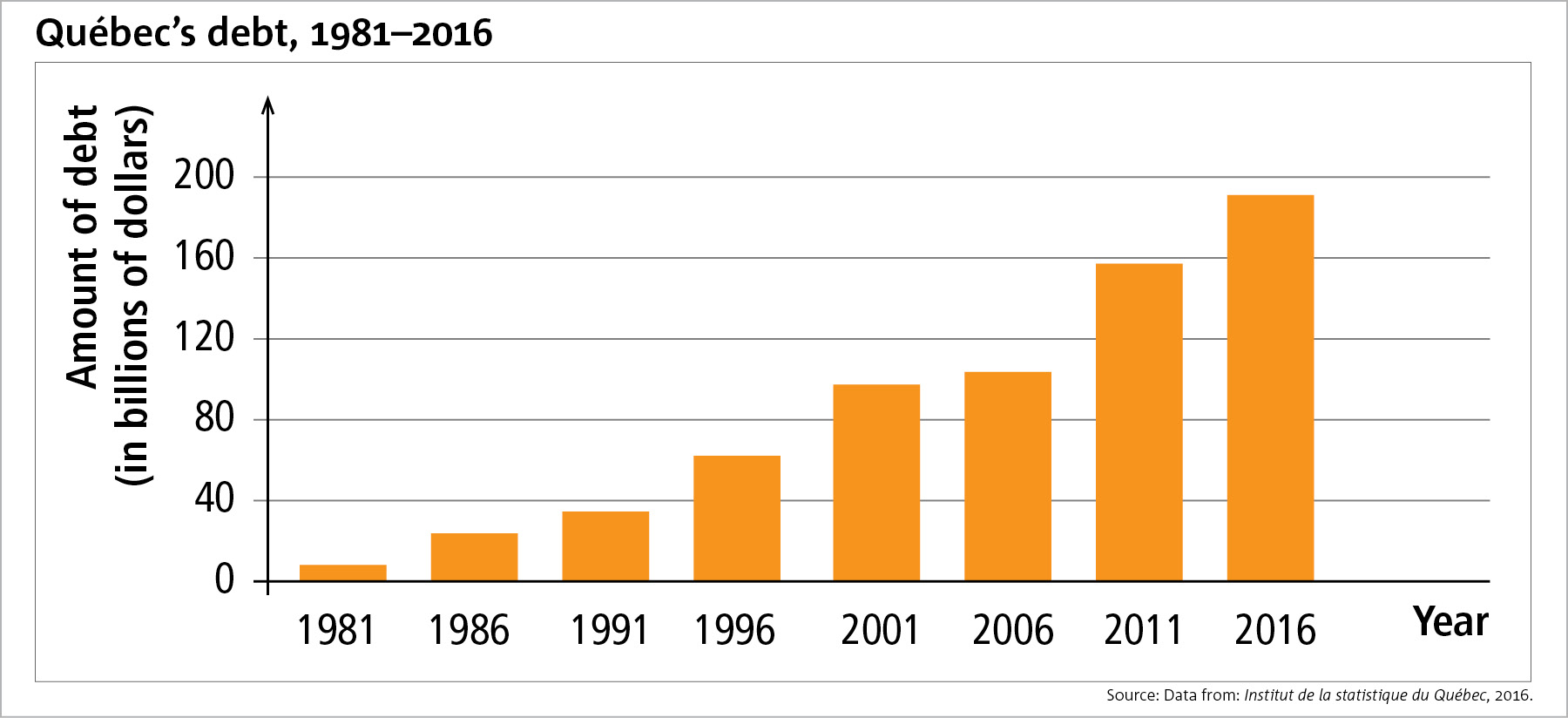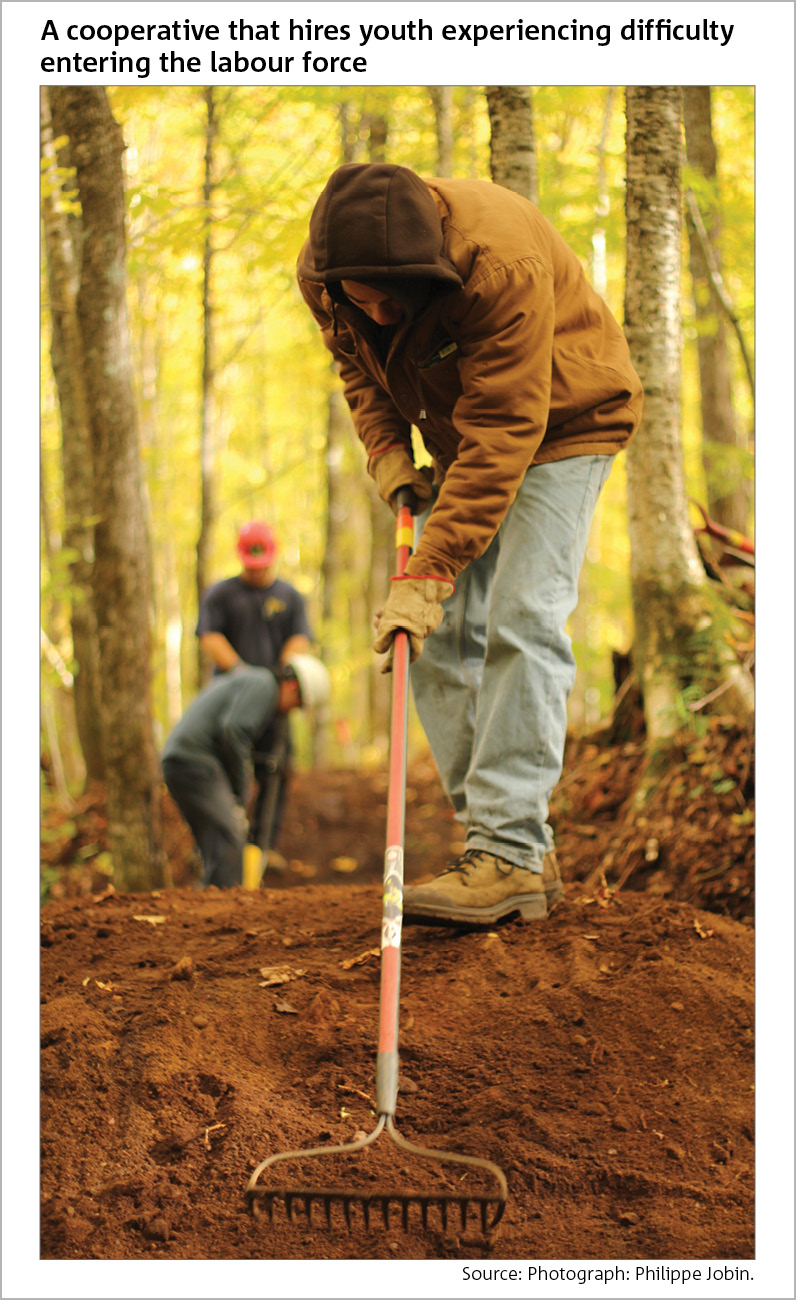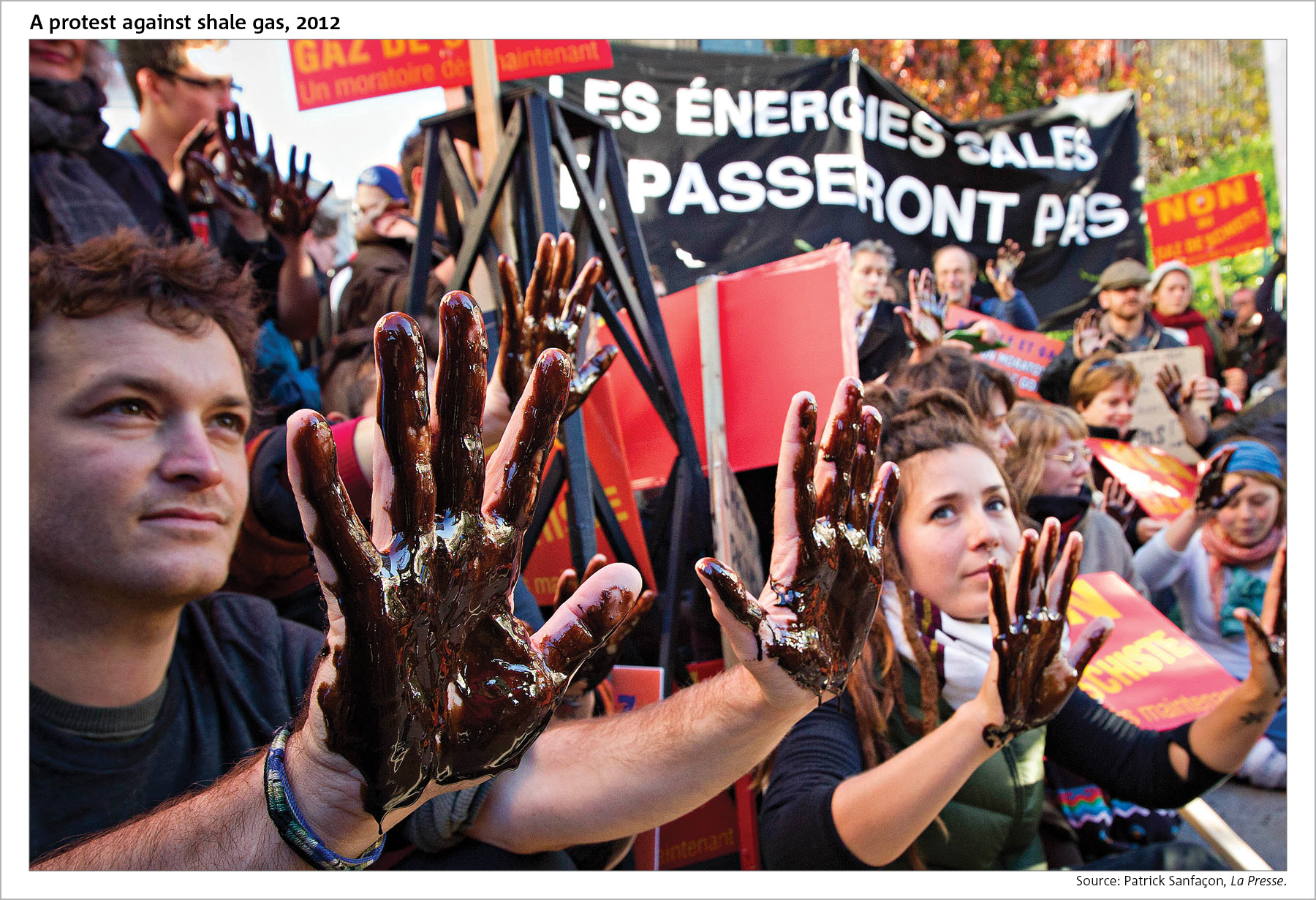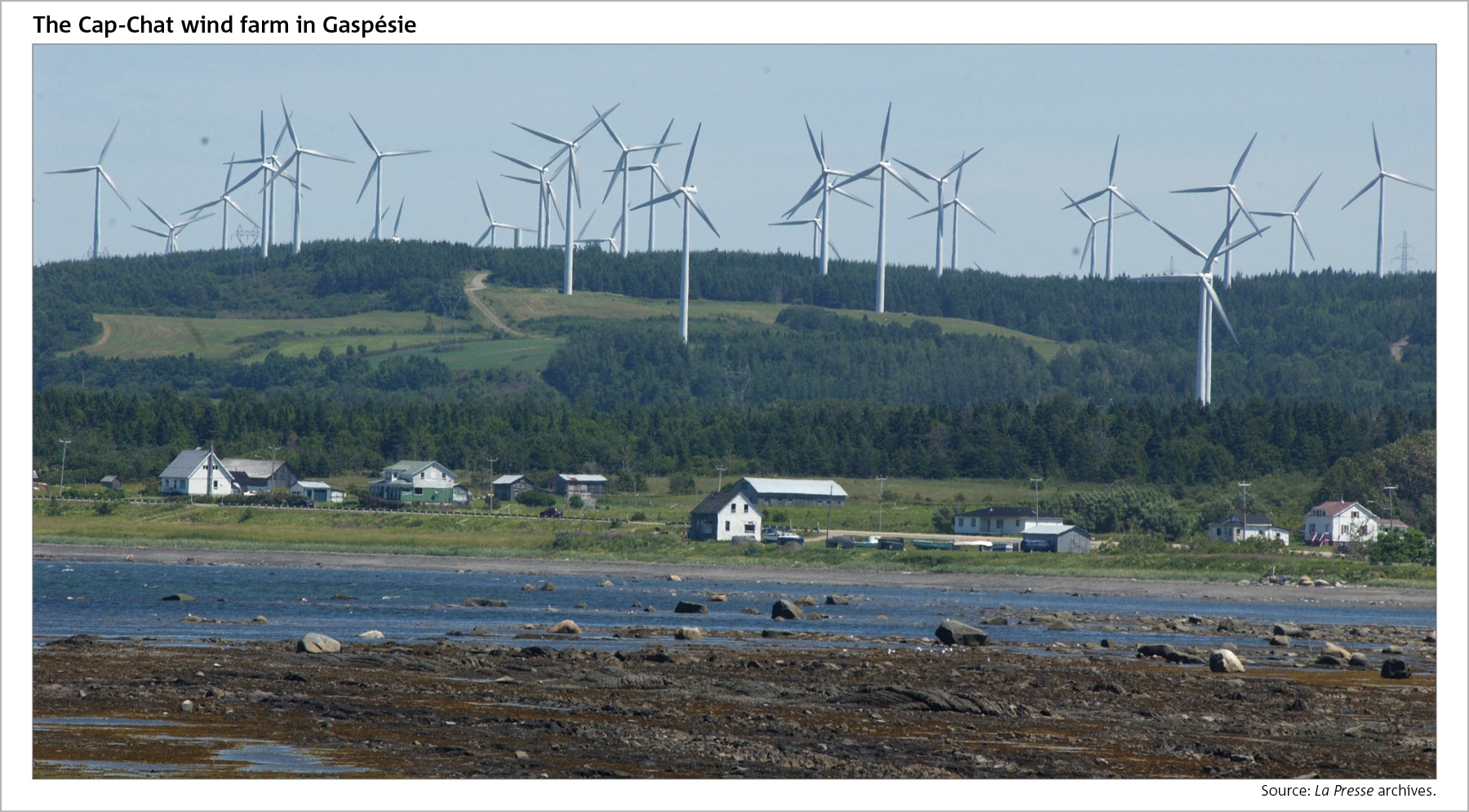Click on the different concepts to explore the content.
- Since the 1980s, the issue of Québec’s place within the Canadian federation has been the focus of political debates.
- A sovereignist movement was established and instigated two referendums, one in 1980 and the other in 1995. At the same time, constitutional negotiations sought to define Québec’s political status, among other things.
- In 1985, the Québec government recognized the existence and the ancestral rights of 10 Indigenous nations in Québec. An 11th nation, the Maliseet, was recognized in 1989.
- In 2006, the House of Commons adopted a motion recognizing that Quebecers formed a nation within a united Canada.
- Created in 2008, the Truth and Reconciliation Commission of Canada was set up to shed light on what 150 000 Indigenous children endured in residential schools.
- In the summer of 1990, a land dispute sparked a conflict in Oka between the Mohawk and the provincial and federal governments.
- In 1999, the territory of Nunavut was carved out of the former boundaries of the Northwest Territories.
- In 2002, the Paix des Braves recognized the Cree’s ancestral rights to the land they occupied and encouraged the participation of Cree businesses in development projects in the territory.
- Québec’s economy was deeply affected by the recession in the early 1980s.
- As a result of an economic downturn, the Québec government went into debt in order to maintain the services it offered to the population. The role of the state was challenged and redefined.
- In the context of globalization, Canada, the United States and Mexico concluded the North American Free Trade Agreement (NAFTA), which came into effect in 1994.
- To remain competitive, Québec has encouraged the development of innovative economic sectors.
- Since the 1980s, urbanization has continued to grow in Québec, often to the detriment of rural communities, some of which are facing devitalization.
- The falling birth rate and the rising number of seniors have led to the aging of Québec’s population.
- To raise the birth rate, the Québec government has adopted several measures, such as the creation of child care centres in 1997 and the Québec Parental Insurance Plan in 2006.
- Immigration has allowed Québec to compensate for its low birth rate.
- The Canada–Québec Accord on immigration, signed in 1991, gave Québec the power to select its immigrants. It also gave the province exclusive responsibility for receiving and integrating immigrants within its borders.
- Various measures were adopted in order to promote gender equality. In particular, these measures addressed the management of family patrimony, pay equity, parity and work–family balance.
- In Canada, like in Québec, the Indigenous population underwent significant population growth.
- The laws designed to protect the French language in the 1970s continued to be the source of language tensions, which grew in the 1980s.
- In 1988, the Supreme Court of Canada ruled that Bill 101, which allowed only French as the language of signage, violated freedom of expression. Bill 101 was replaced by Bill 178, which required French on outdoor signage only. Bill 86, adopted in 1993, finally allowed bilingual signage in general, but required French to be visually predominant.
- Ten Indigenous languages are spoken in Québec, and some 60 across Canada. All of these languages are threatened with extinction, except for the Inuit language, Inuktitut.
- In 1992, the adoption of an initial cultural policy renewed the Québec state’s intervention in the cultural sphere, in particular by implementing various measures for financial support.
- Artistic productions occupy a particularly important place in Québec culture, and are now disseminated around the world.
- The transition to an information society, along with expanding globalization, has profoundly changed Québec society and transformed the means of dissemination in the cultural industry.
- In the context of the economic crisis of the 1980s, the ideology of neo-liberalism gained ground and influenced political and economic thinking.
- Supporters of neo-liberalism questioned the welfare state. They defended laissez-faire economics and limited state intervention in the economy and society.
- Under the influence of neo-liberal ideas, and with the goal of reducing the public debt, governments invested less in social programs, reduced the number of public-sector employees and their wages, and moved toward privatization.
- Members of civil society, that is, people who are not political decision-makers, mobilized and took positions with regard to societal choices.
- Faced with political, economic and social choices, groups denounced the influence of neo-liberal ideas on governments and the negative effects of globalization. They believed that these ideas were causing social inequalities and a growing gap between rich and poor.
- Faced with cultural choices, groups demanded stronger state support for artists and writers.
- Faced with environmental choices, groups demanded more measures to fight climate change and challenged certain practices regarding the exploitation of natural resources.
- In 1980, René Lévesque’s Parti Québécois government held a referendum. It asked the population to give it the mandate to negotiate sovereignty-association with Canada, which would mean political independence with economic ties. The No side won.
- Following the patriation of the Constitution without Québec’s consent and the failure of constitutional negotiations at Lac Meech and Charlottetown, there was a revival of the sovereignty movement.
- In 1995, Jacques Parizeau’s PQ government proposed a sovereignty option in another referendum, which Quebecers rejected for the second time.

